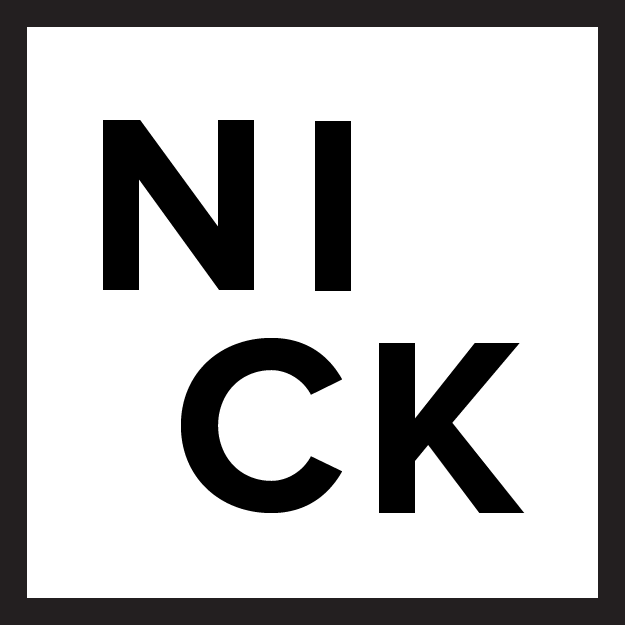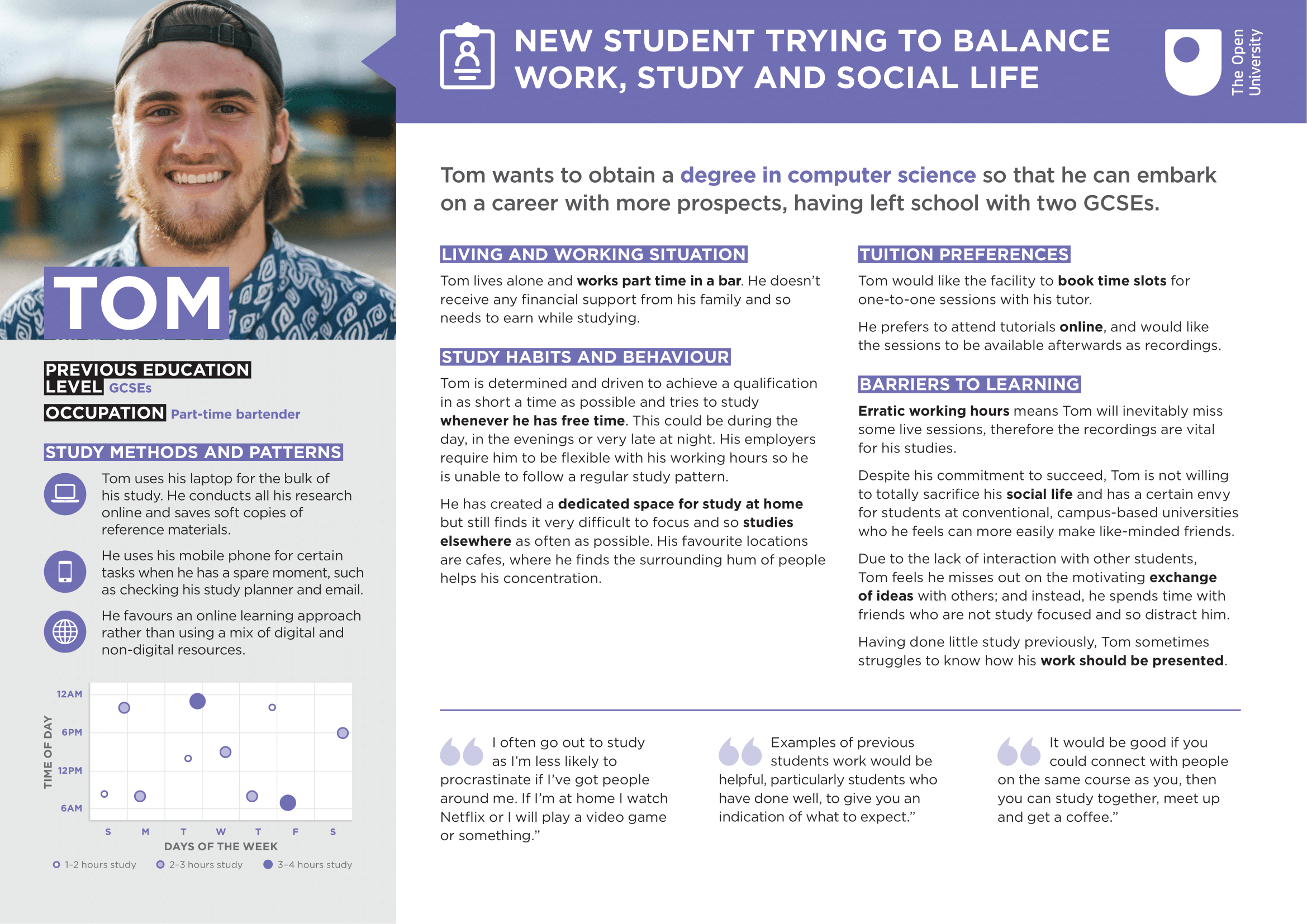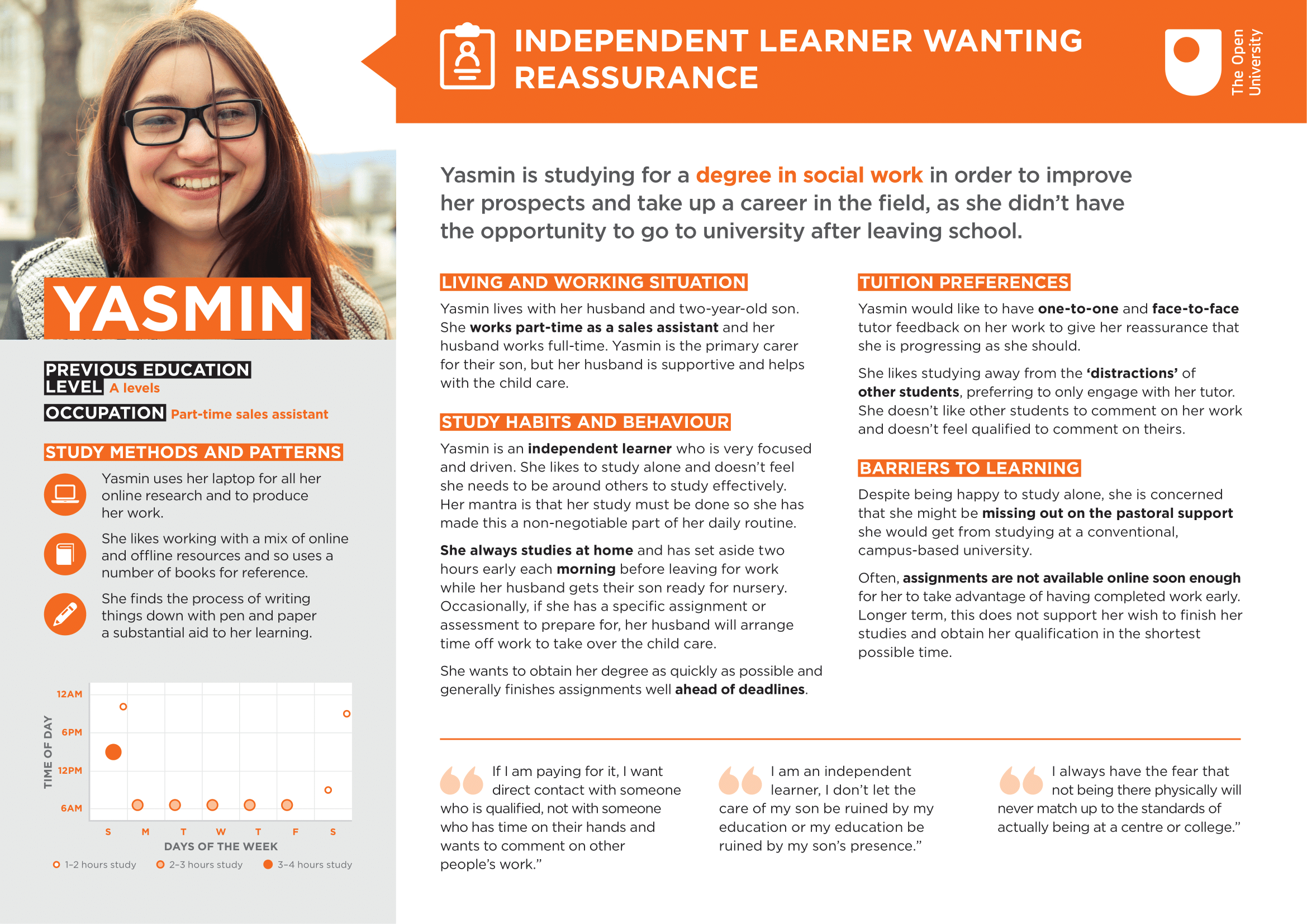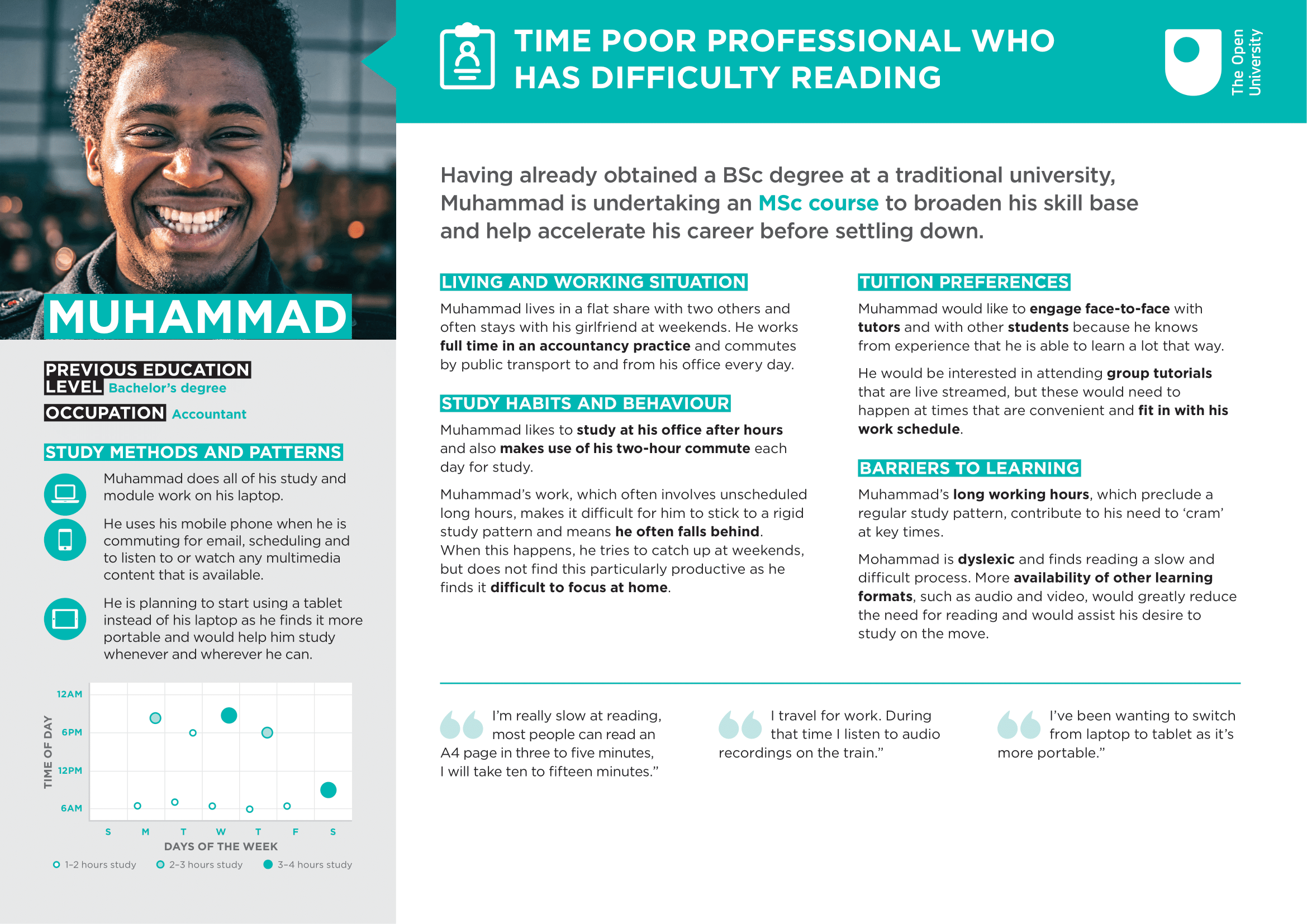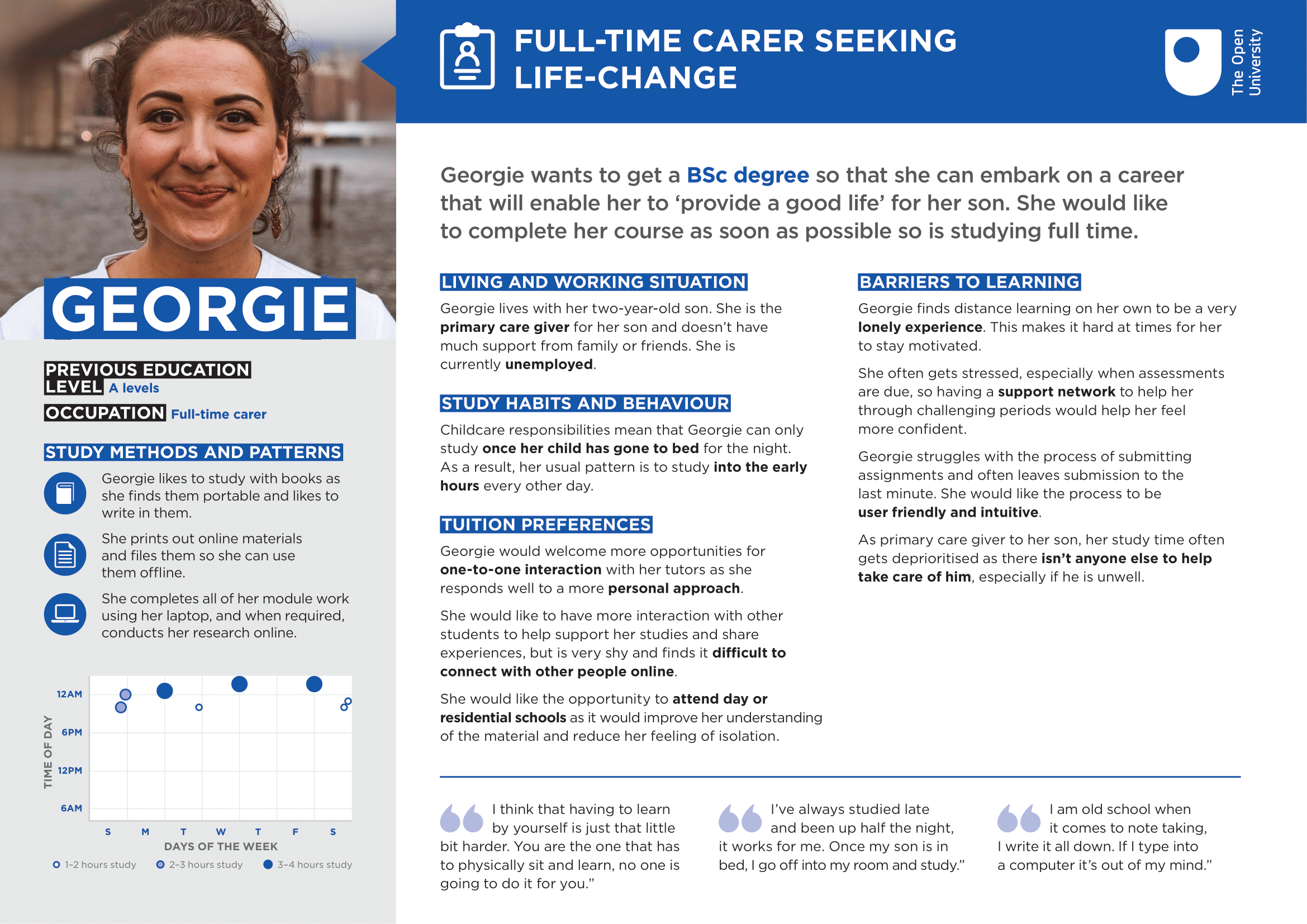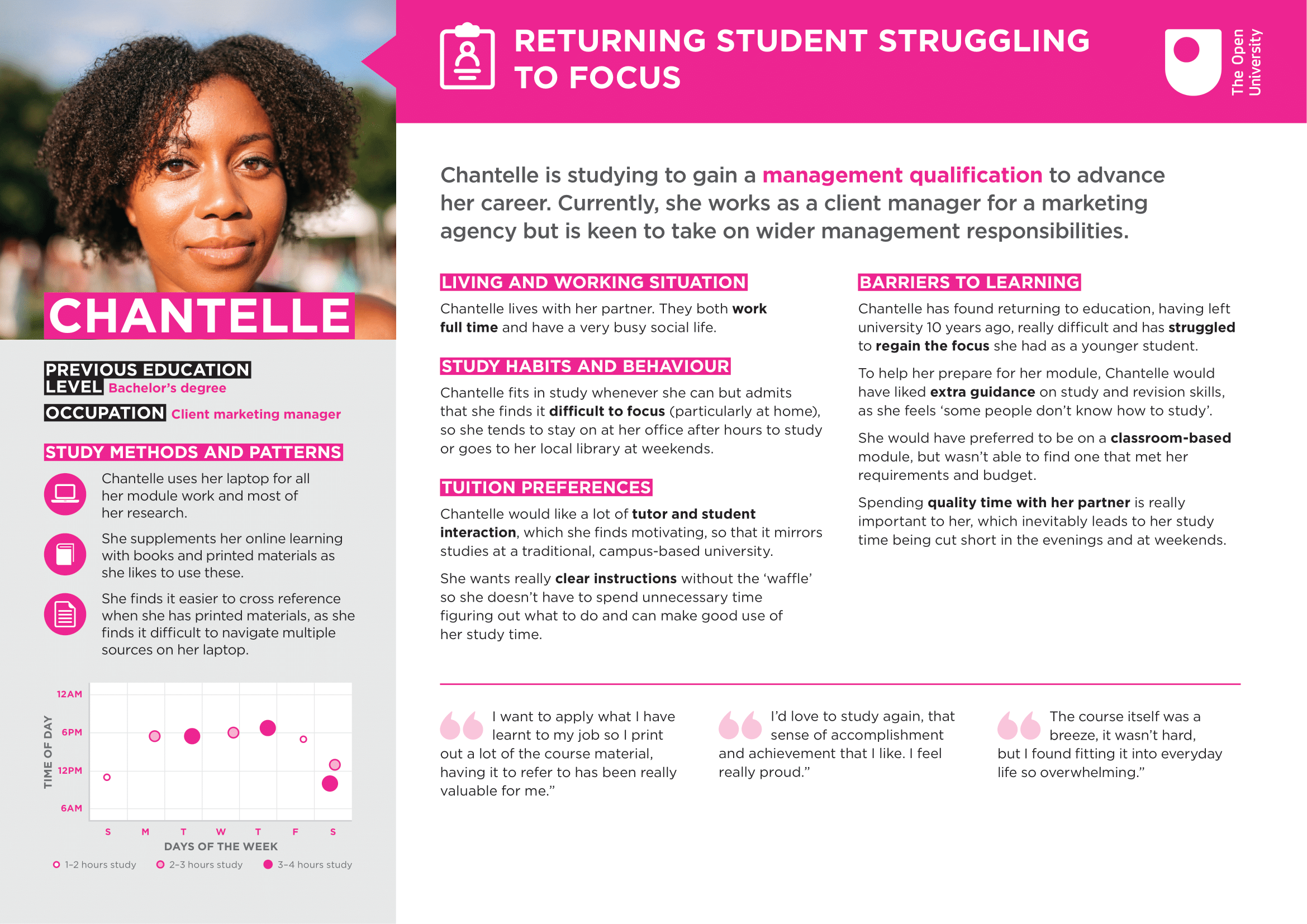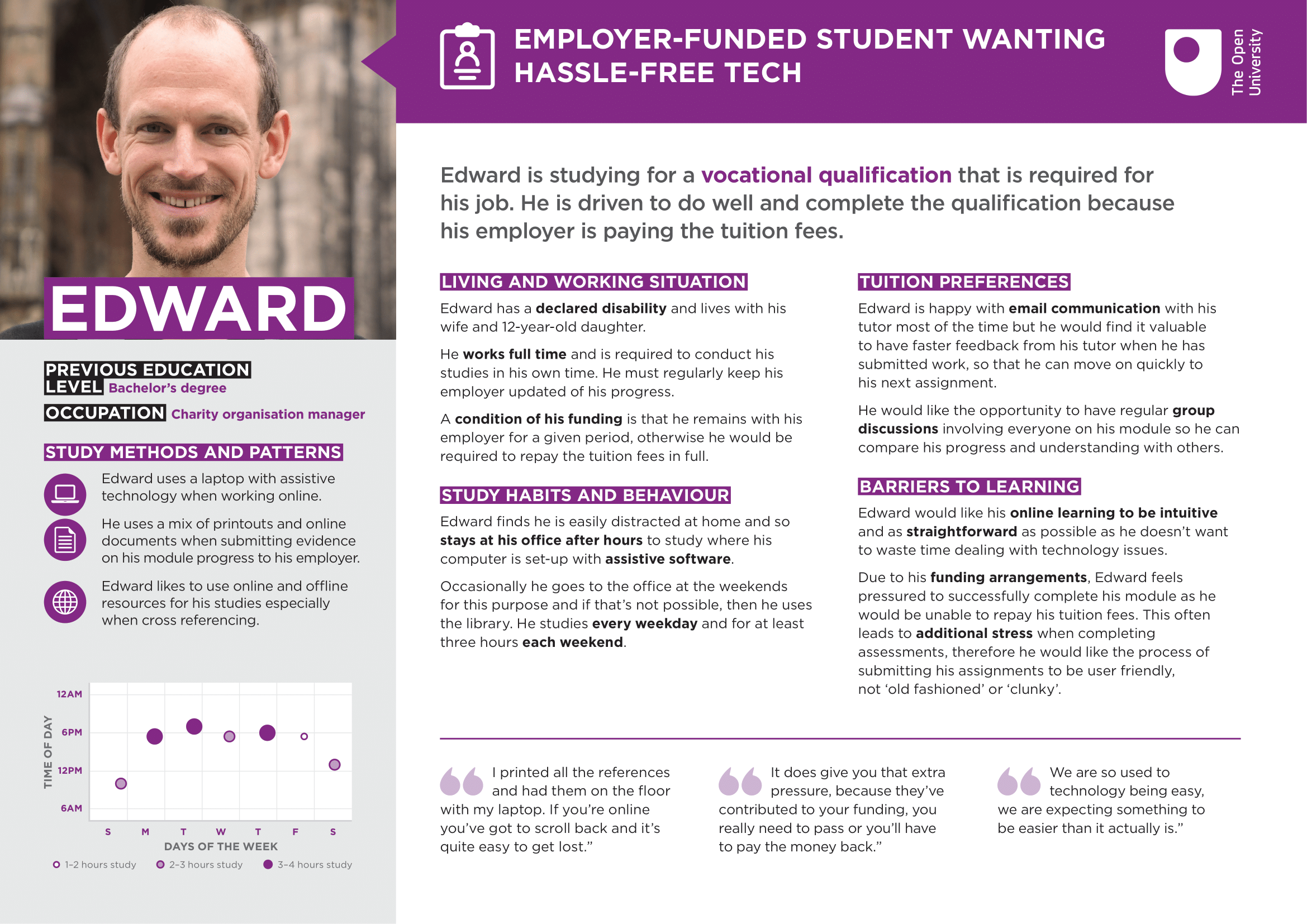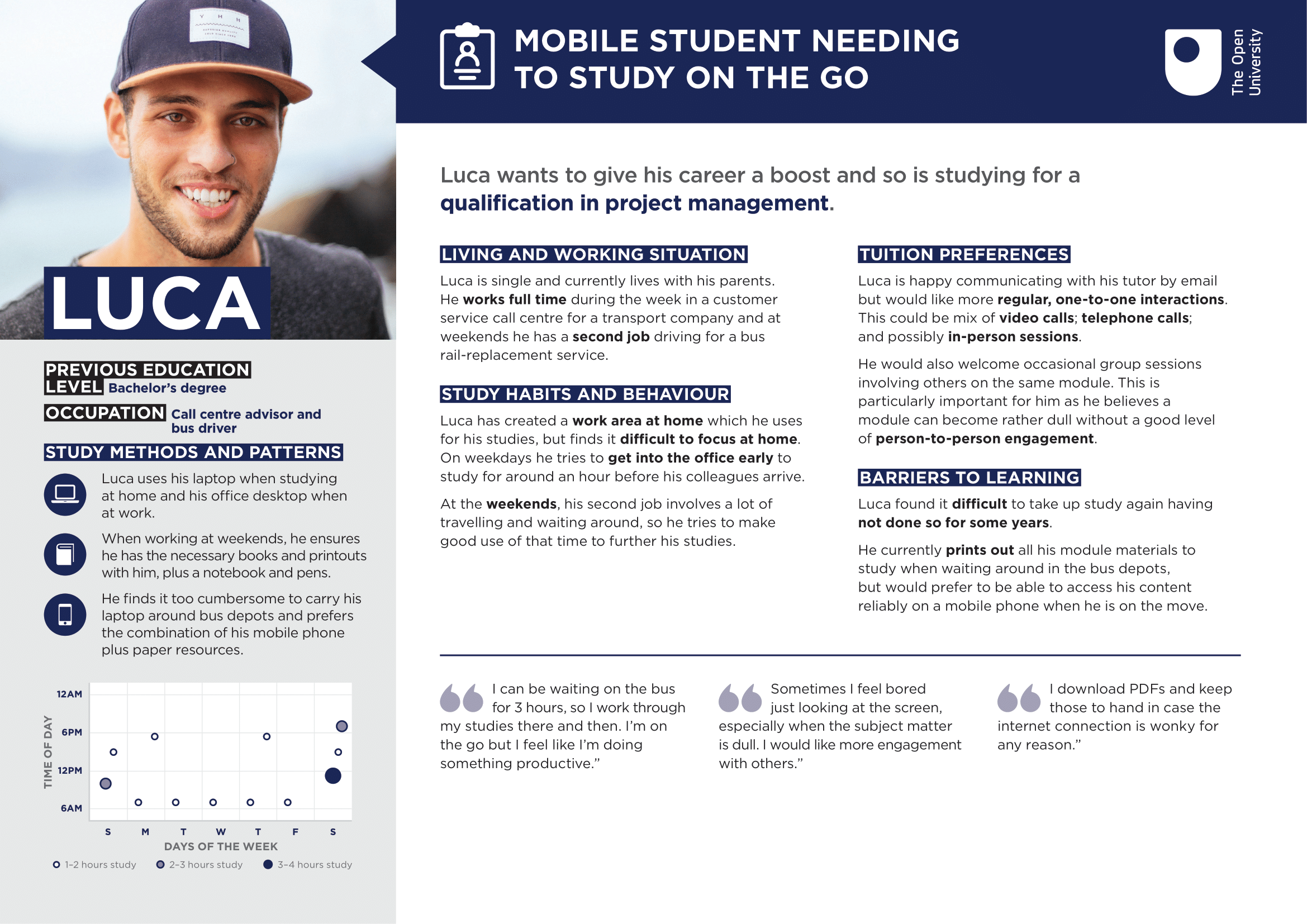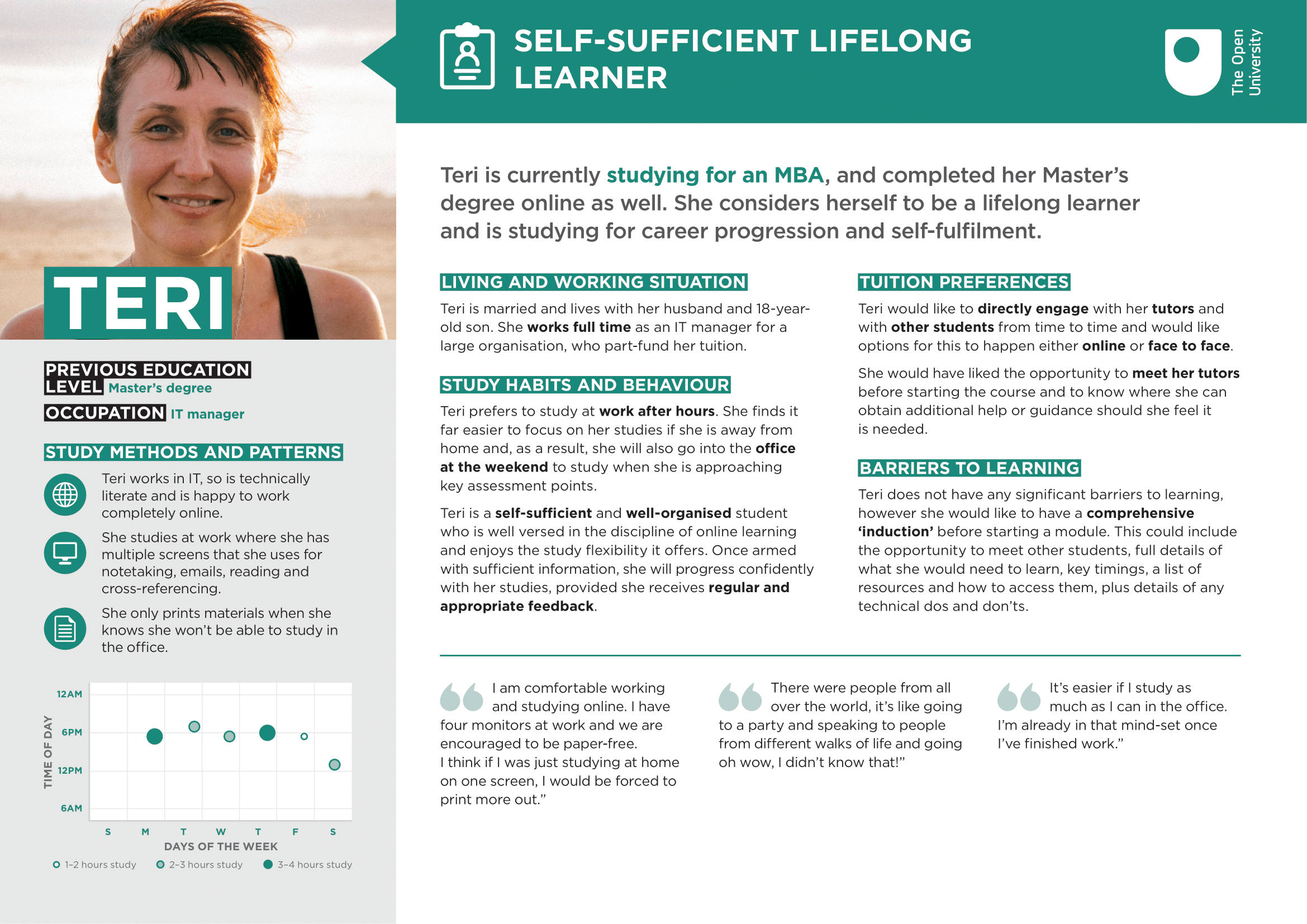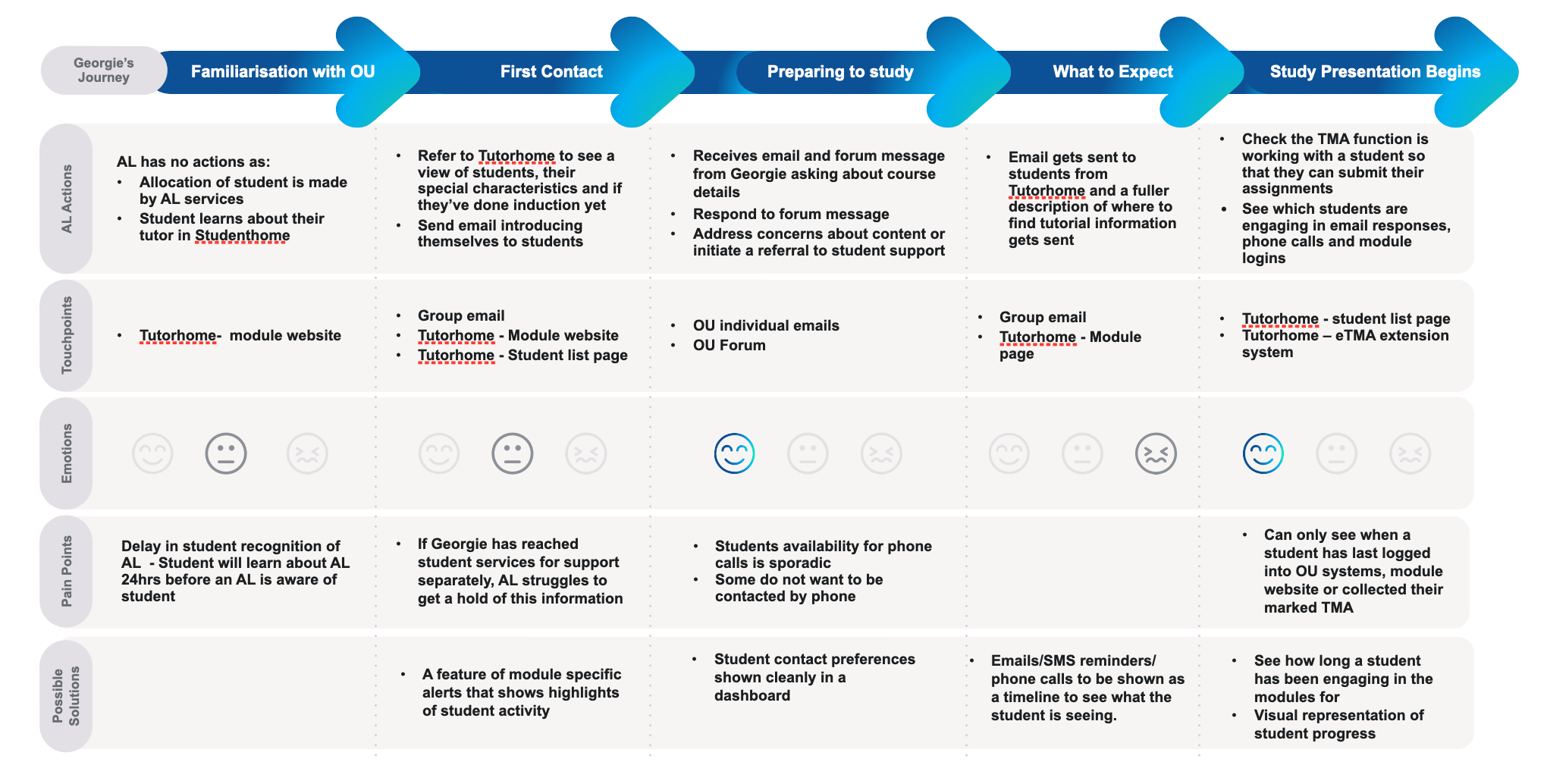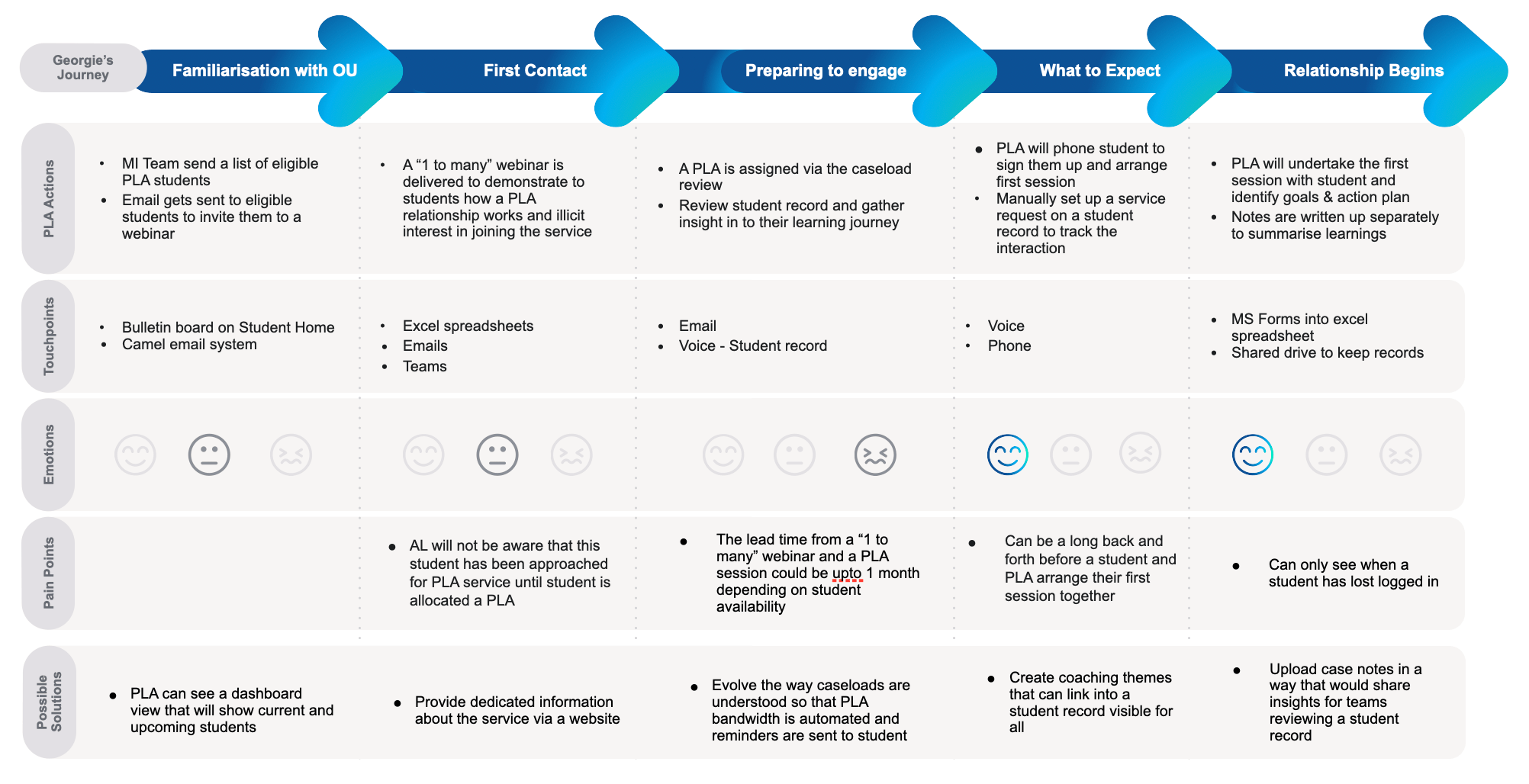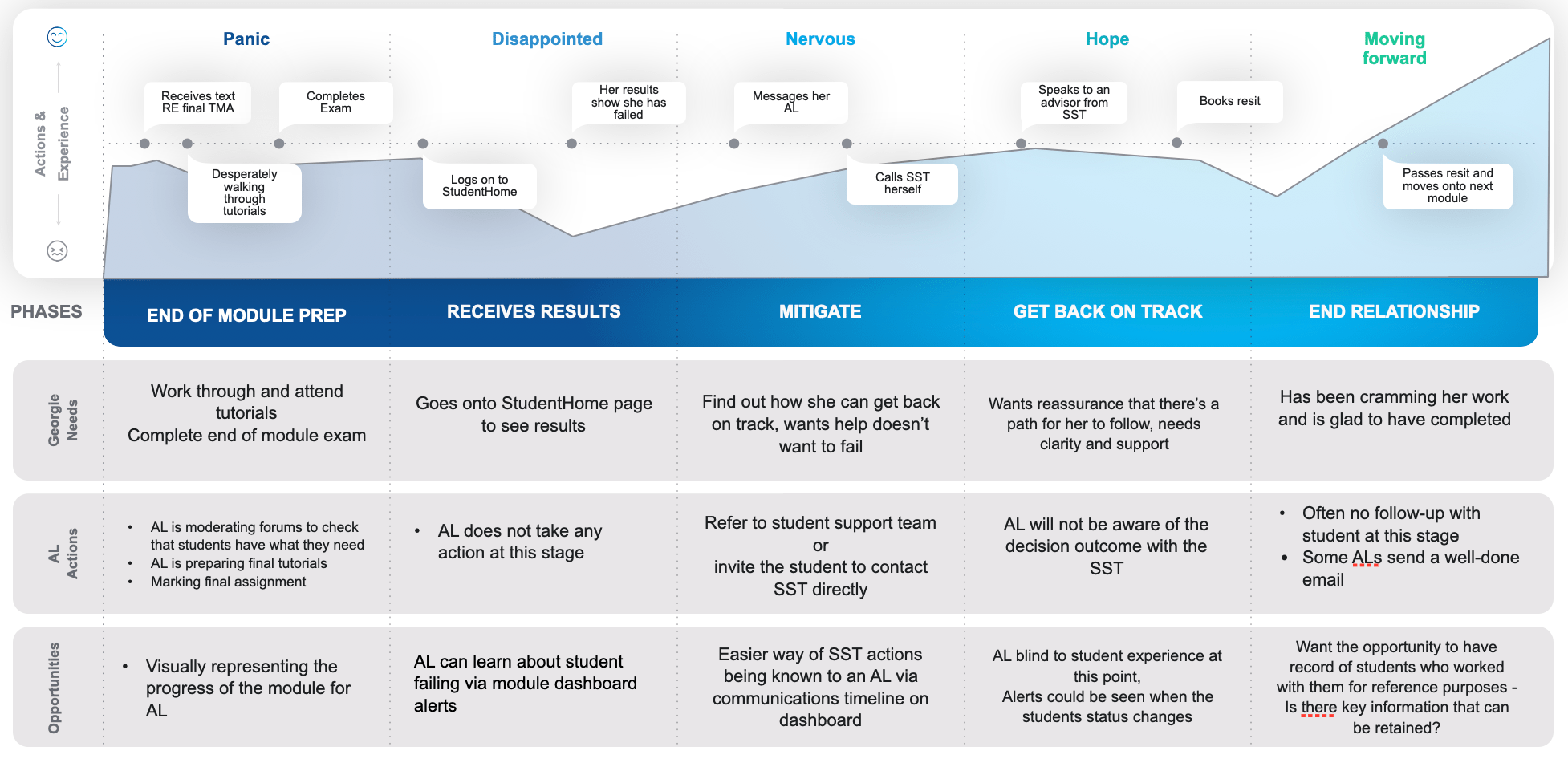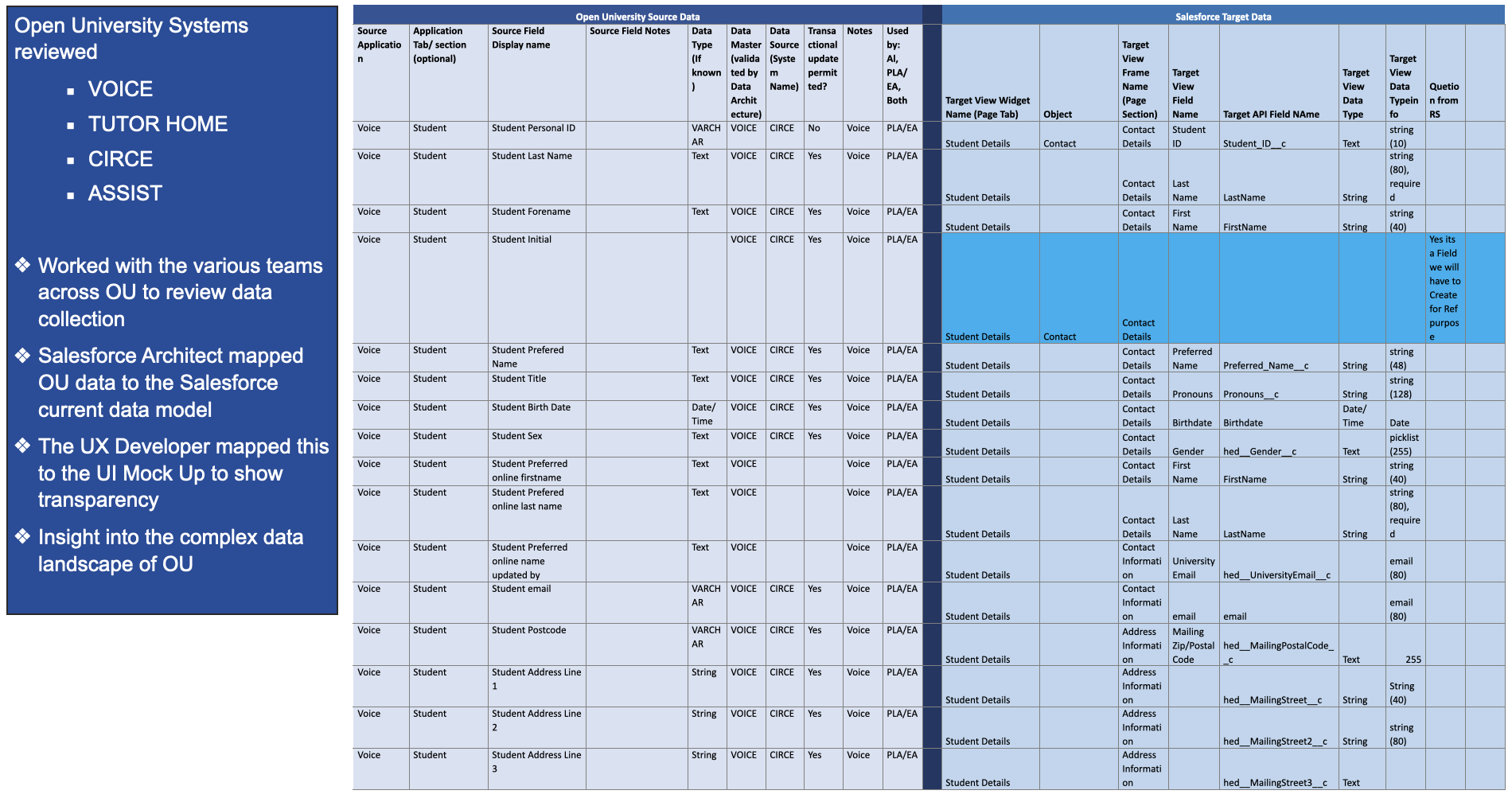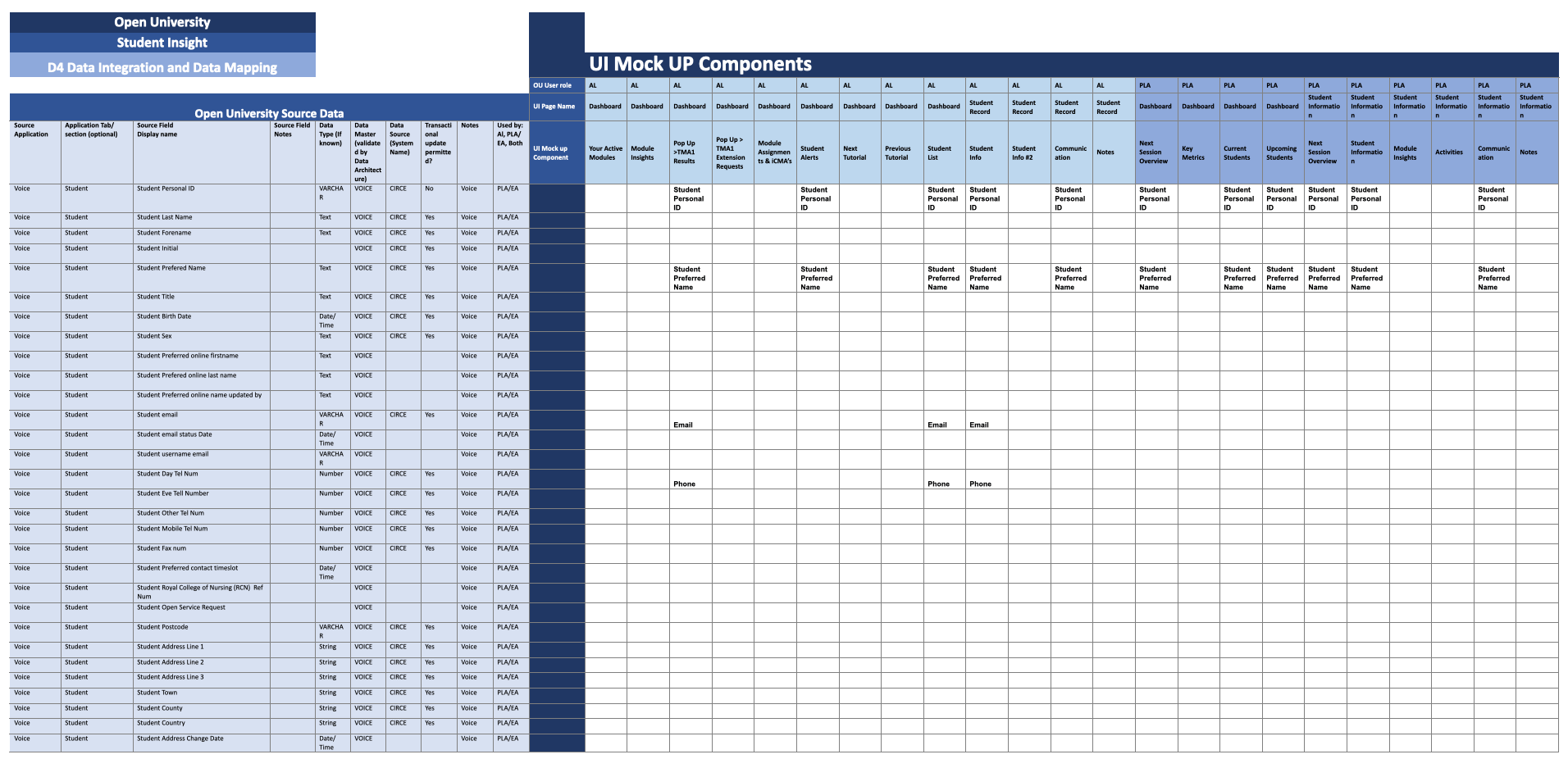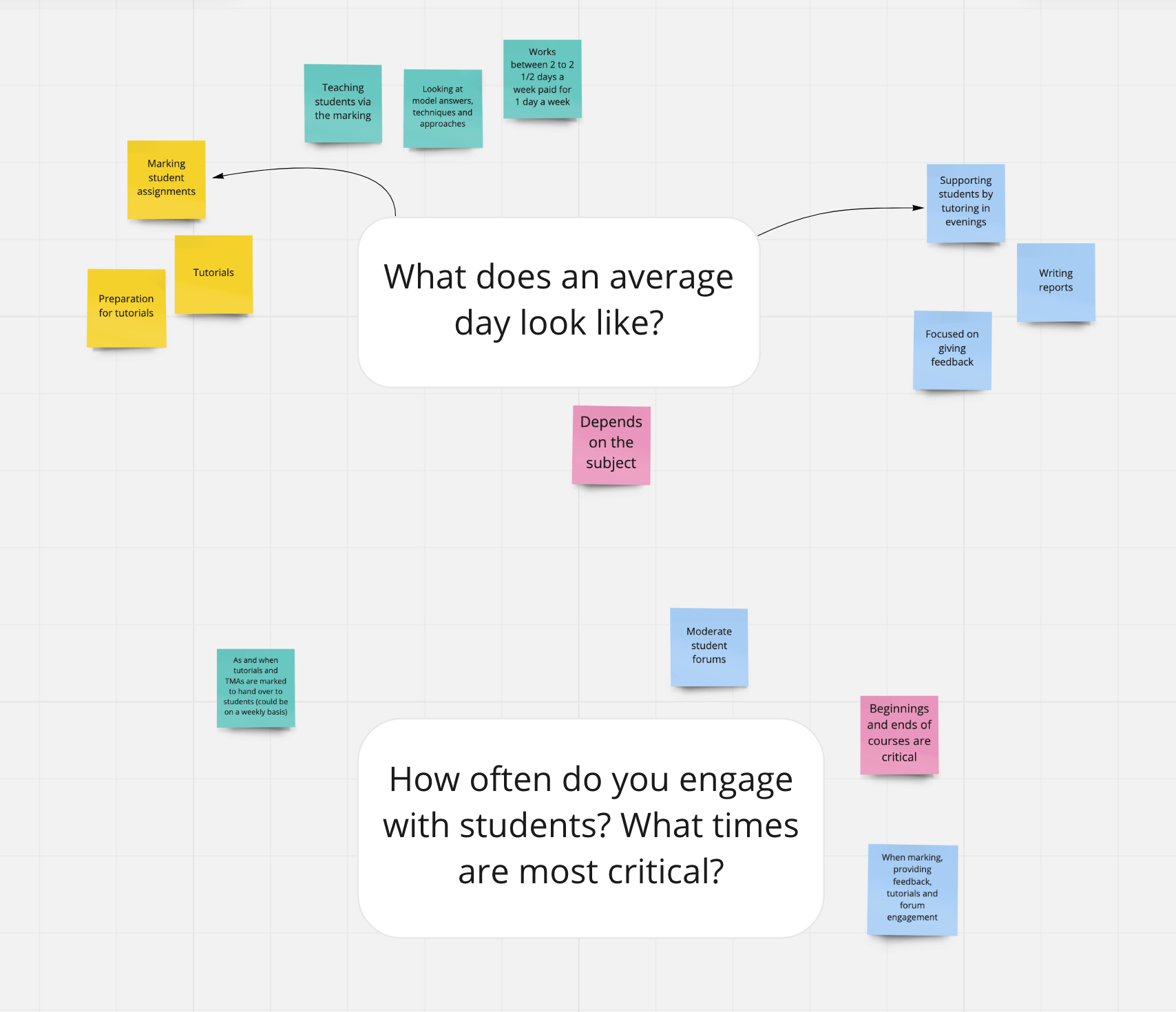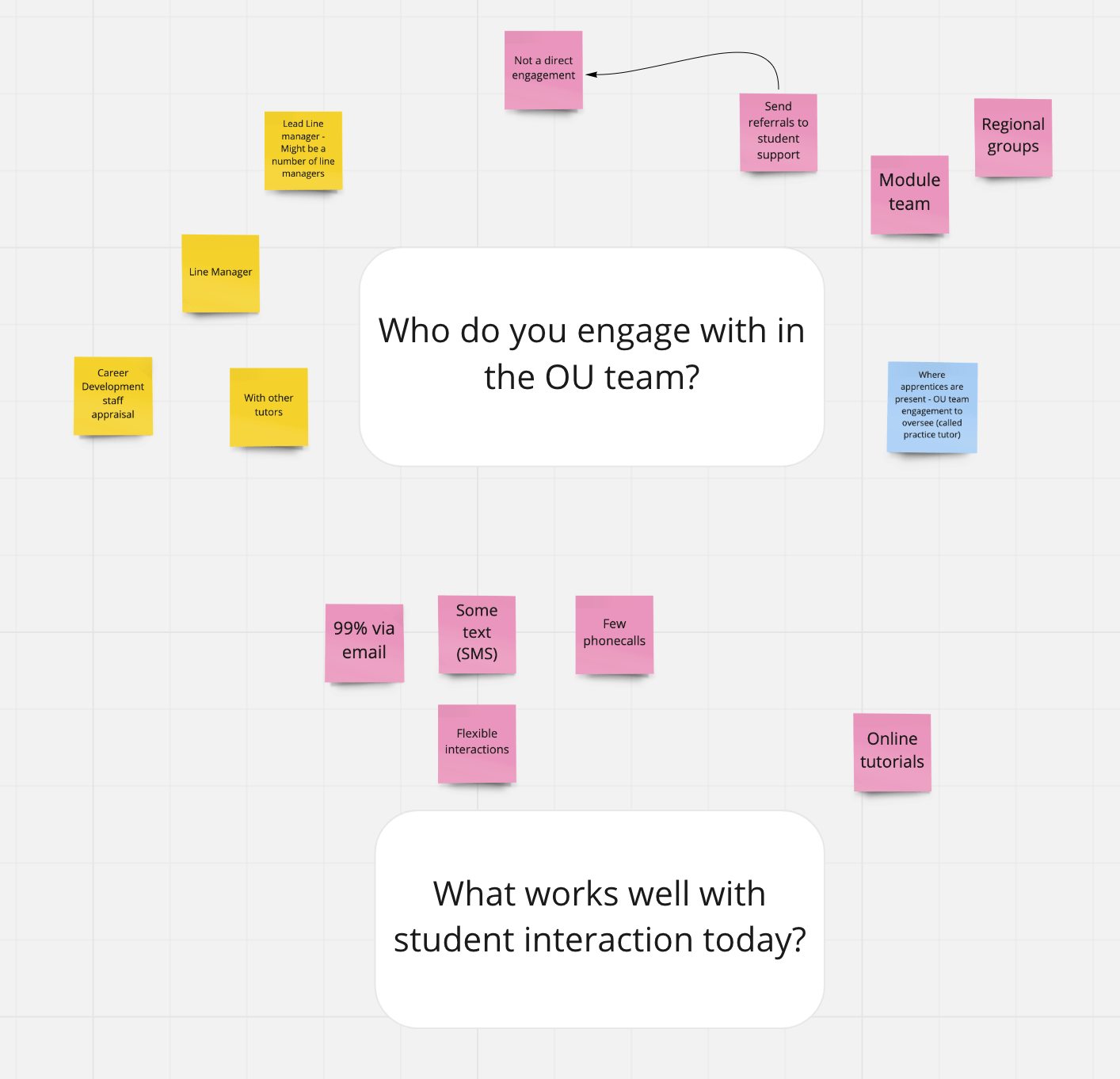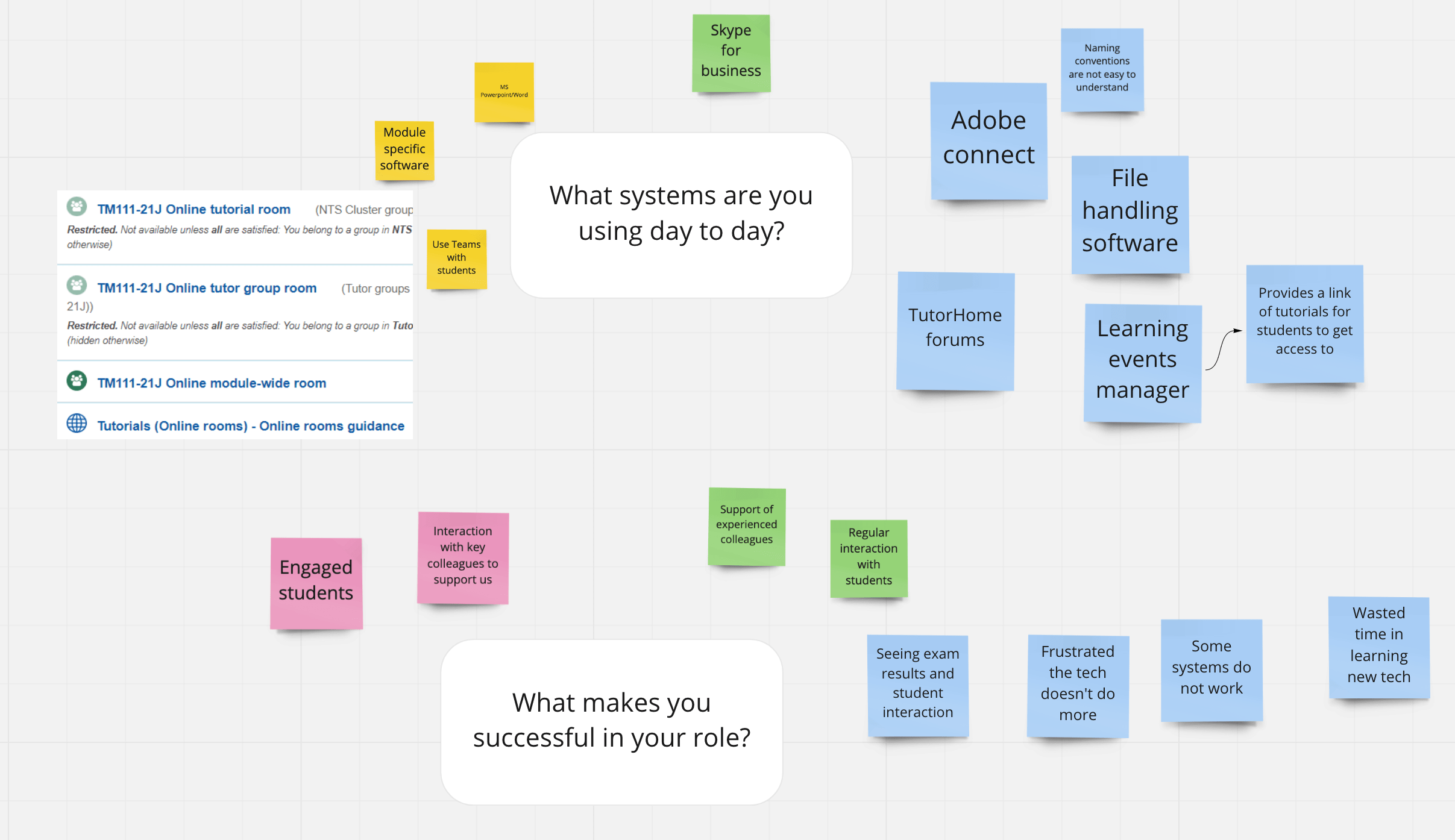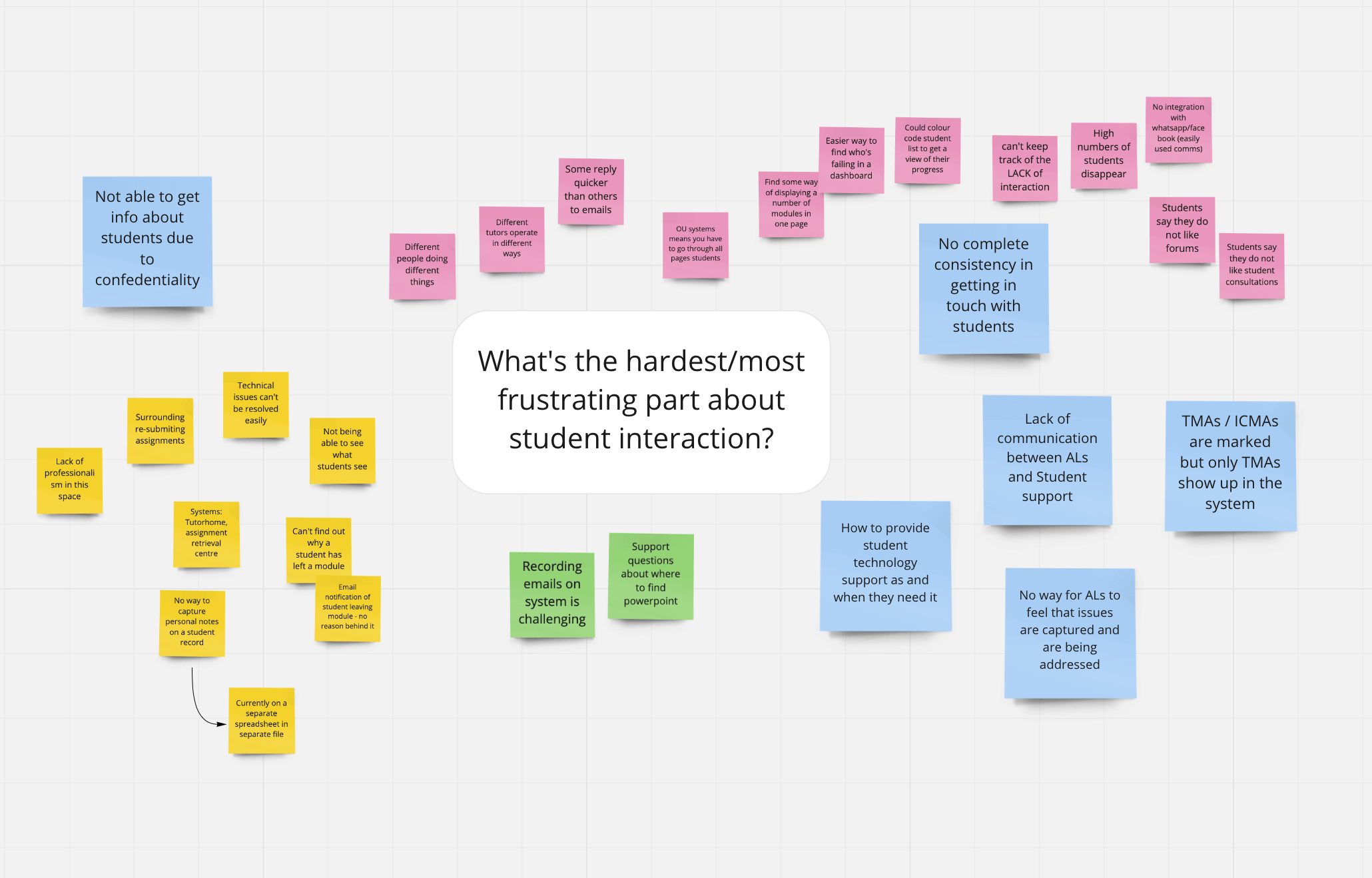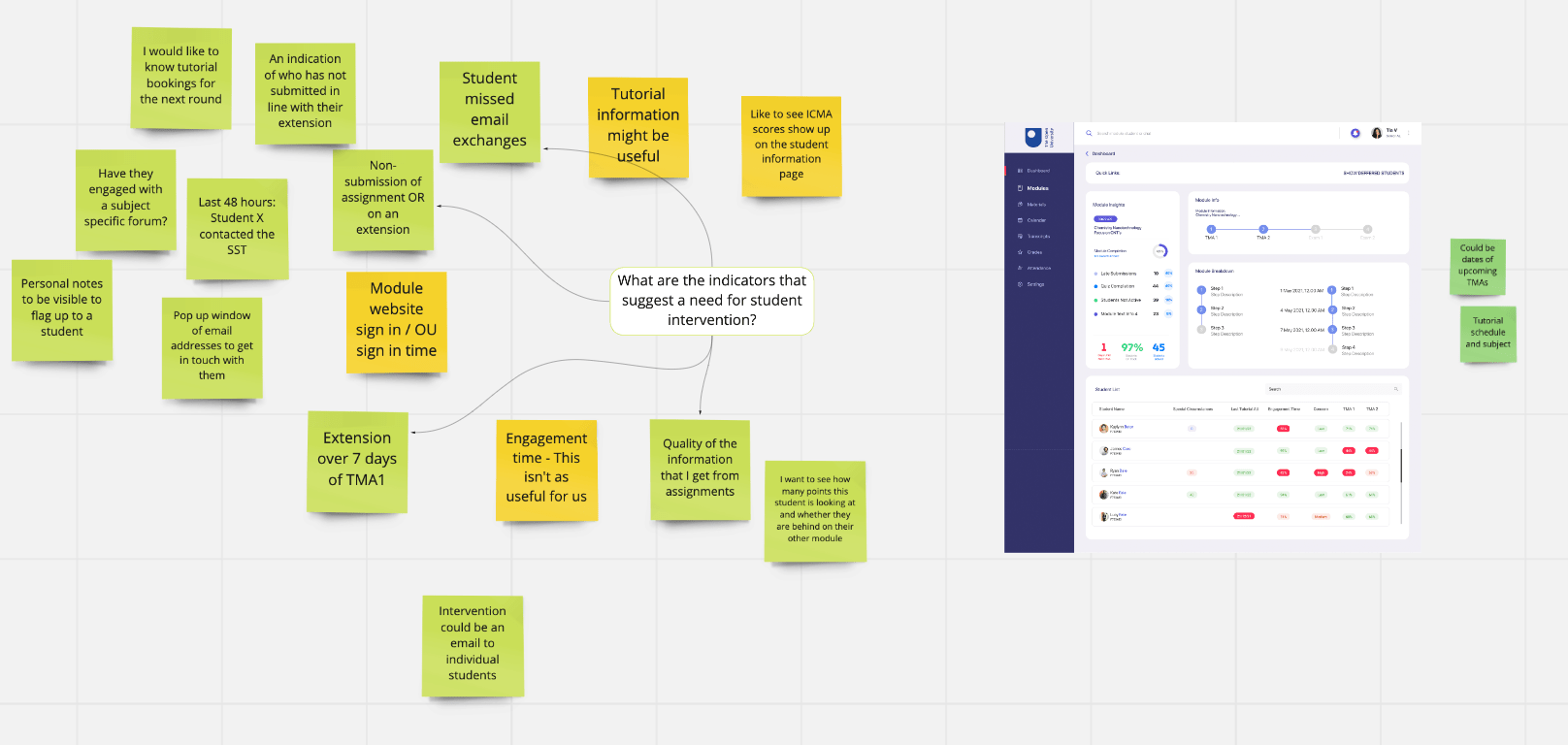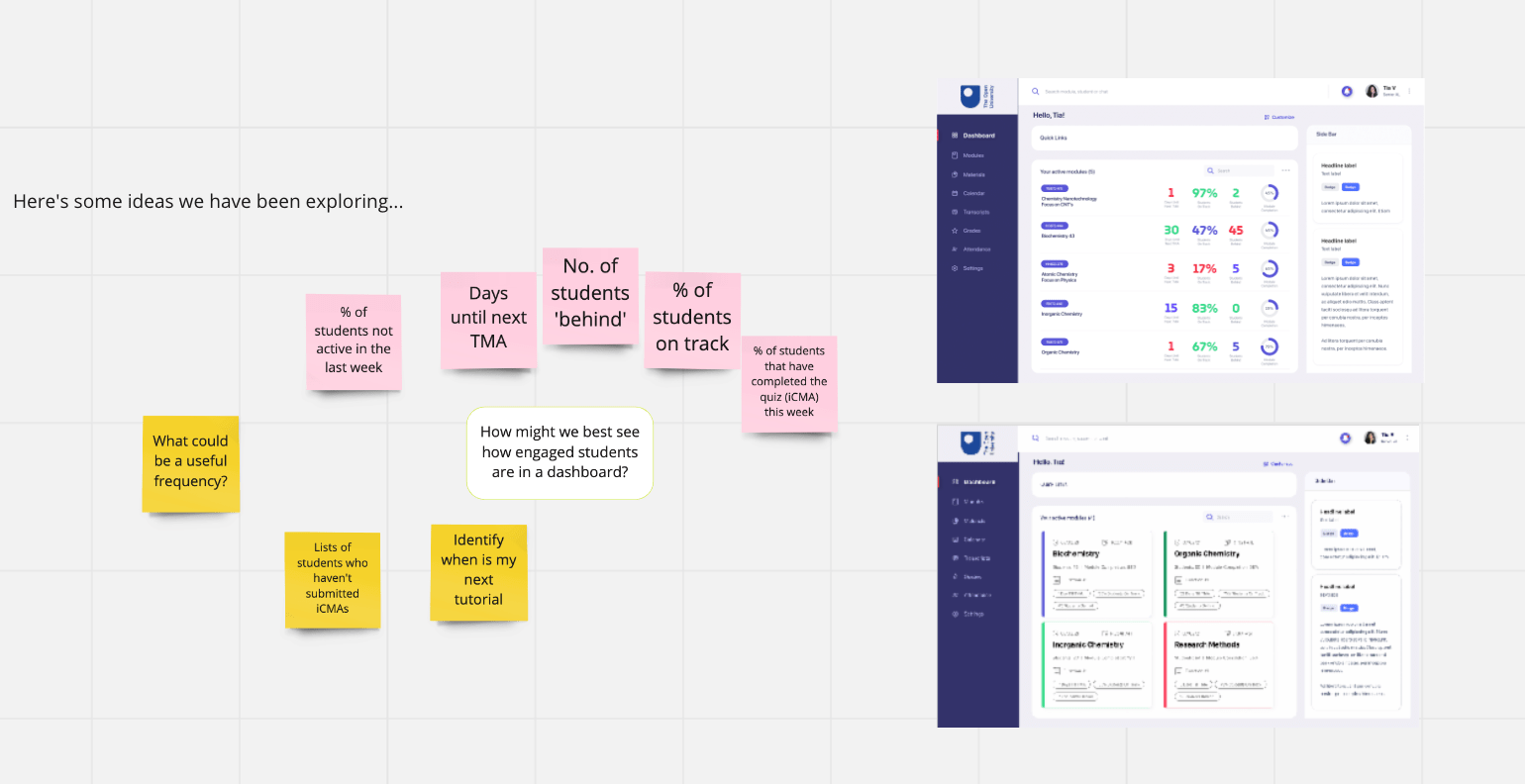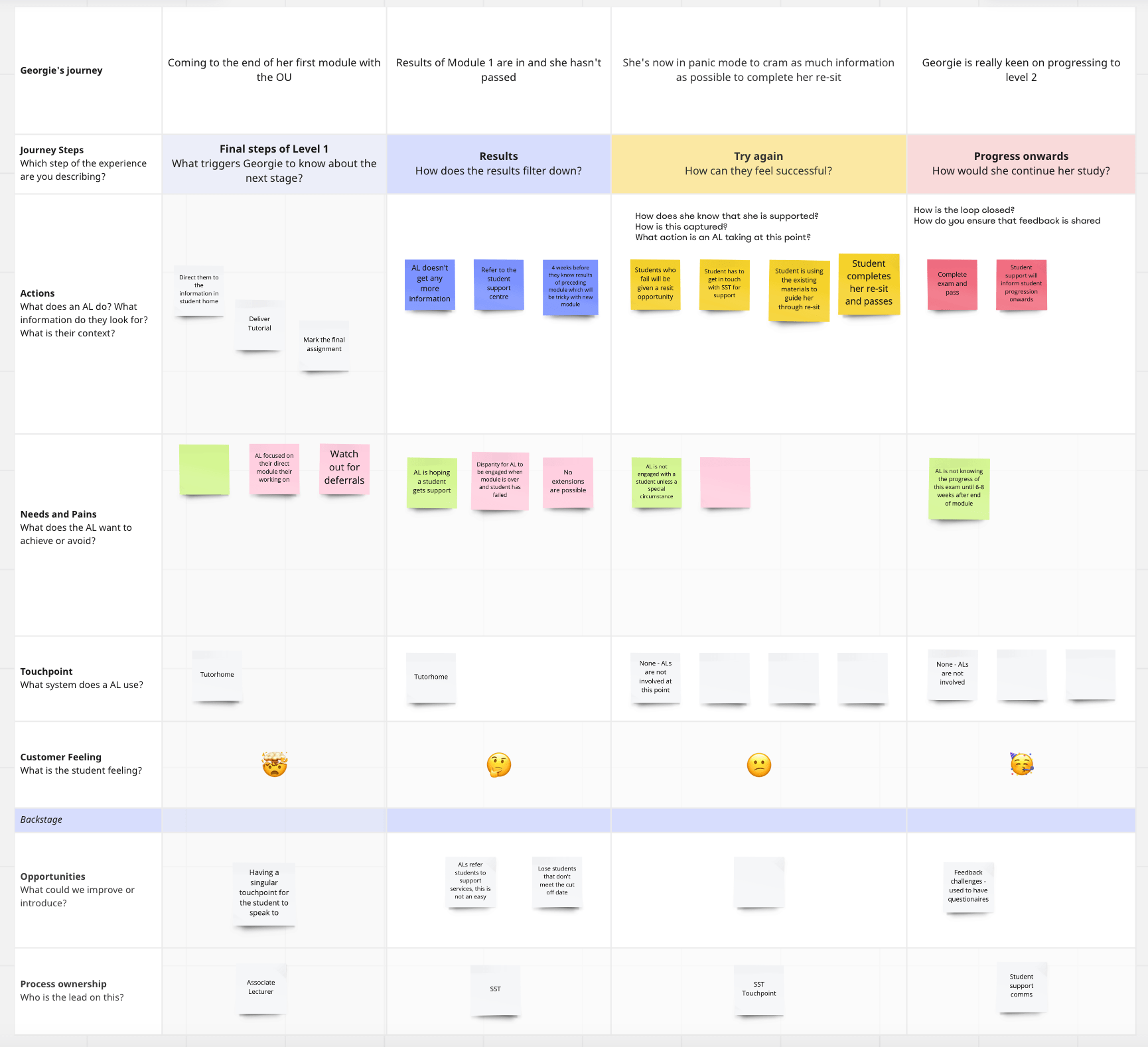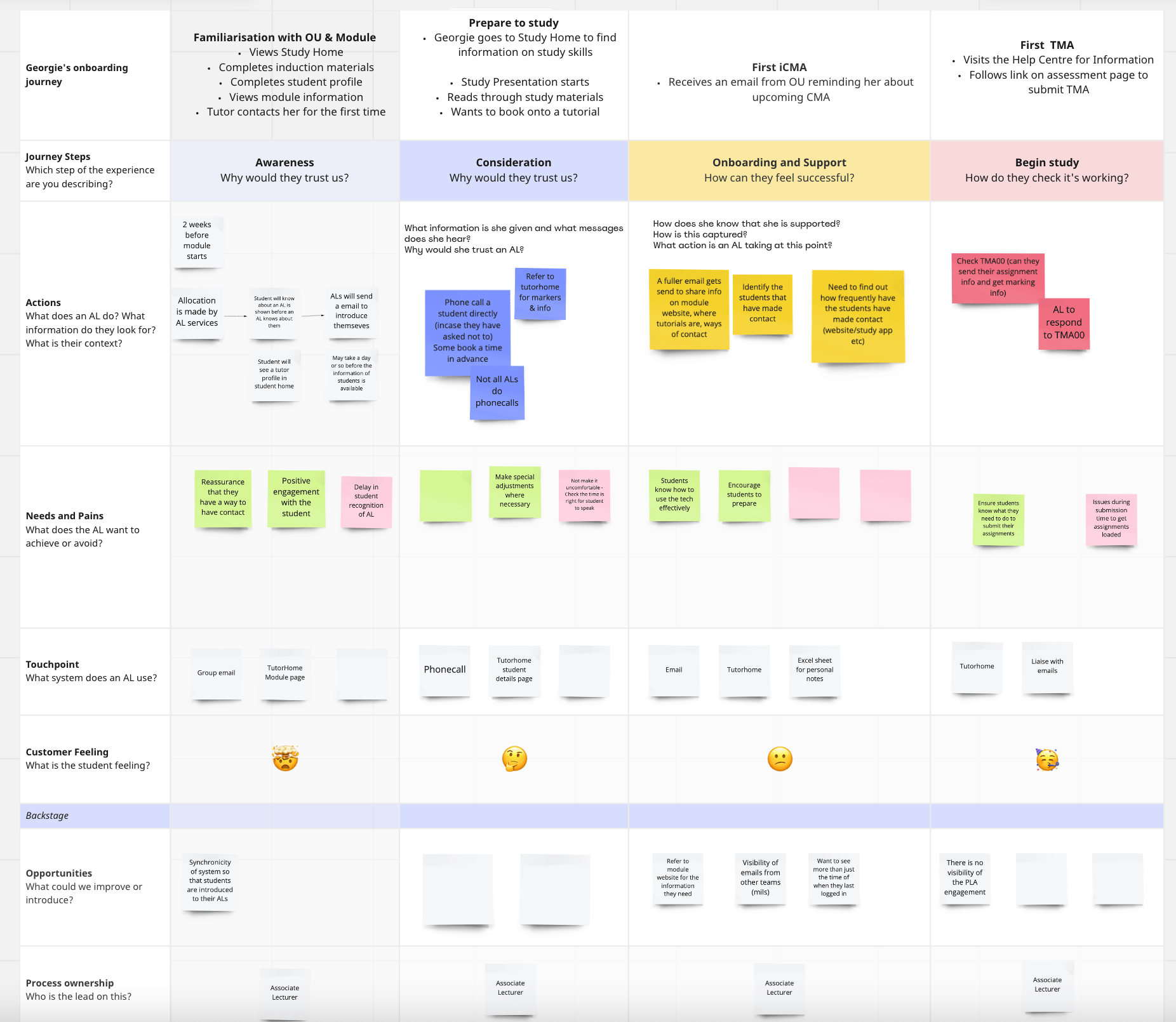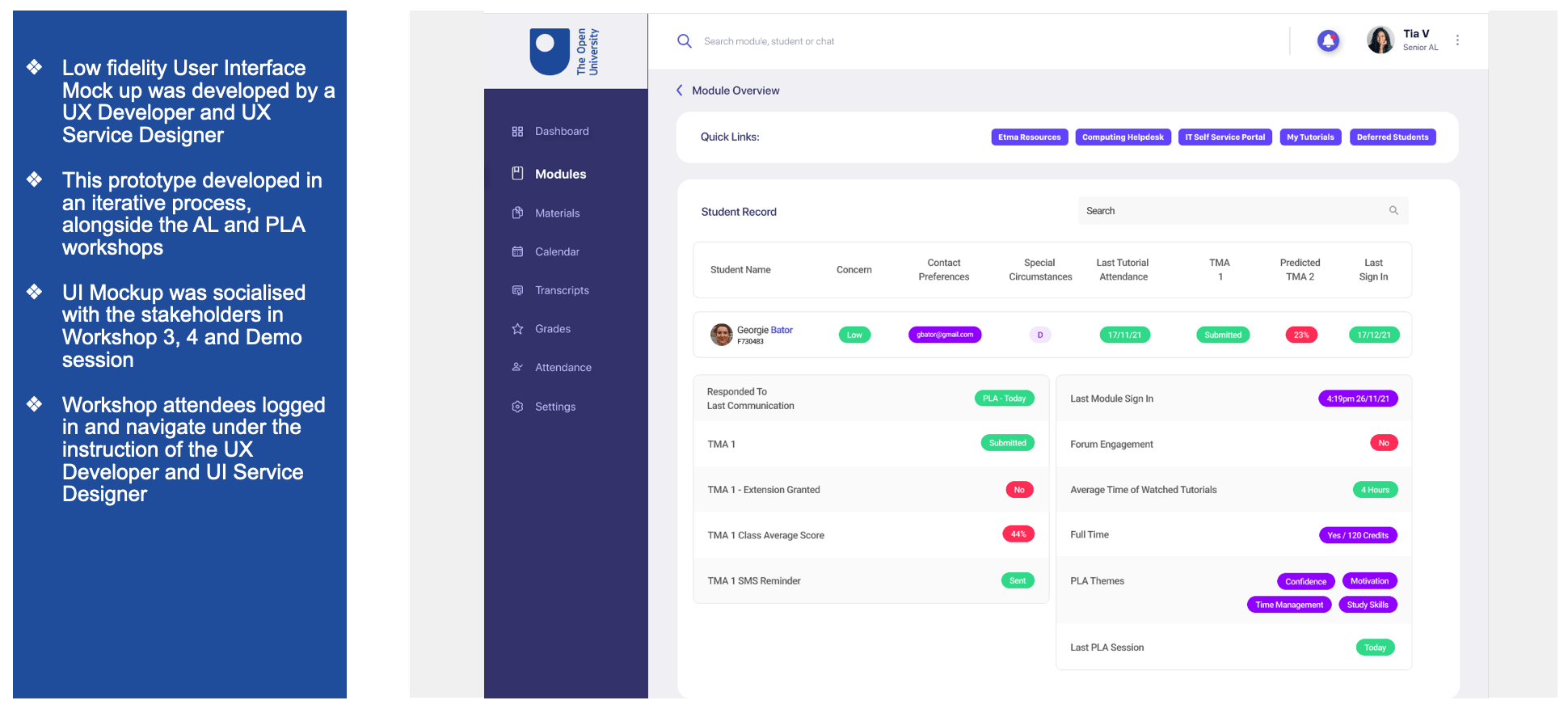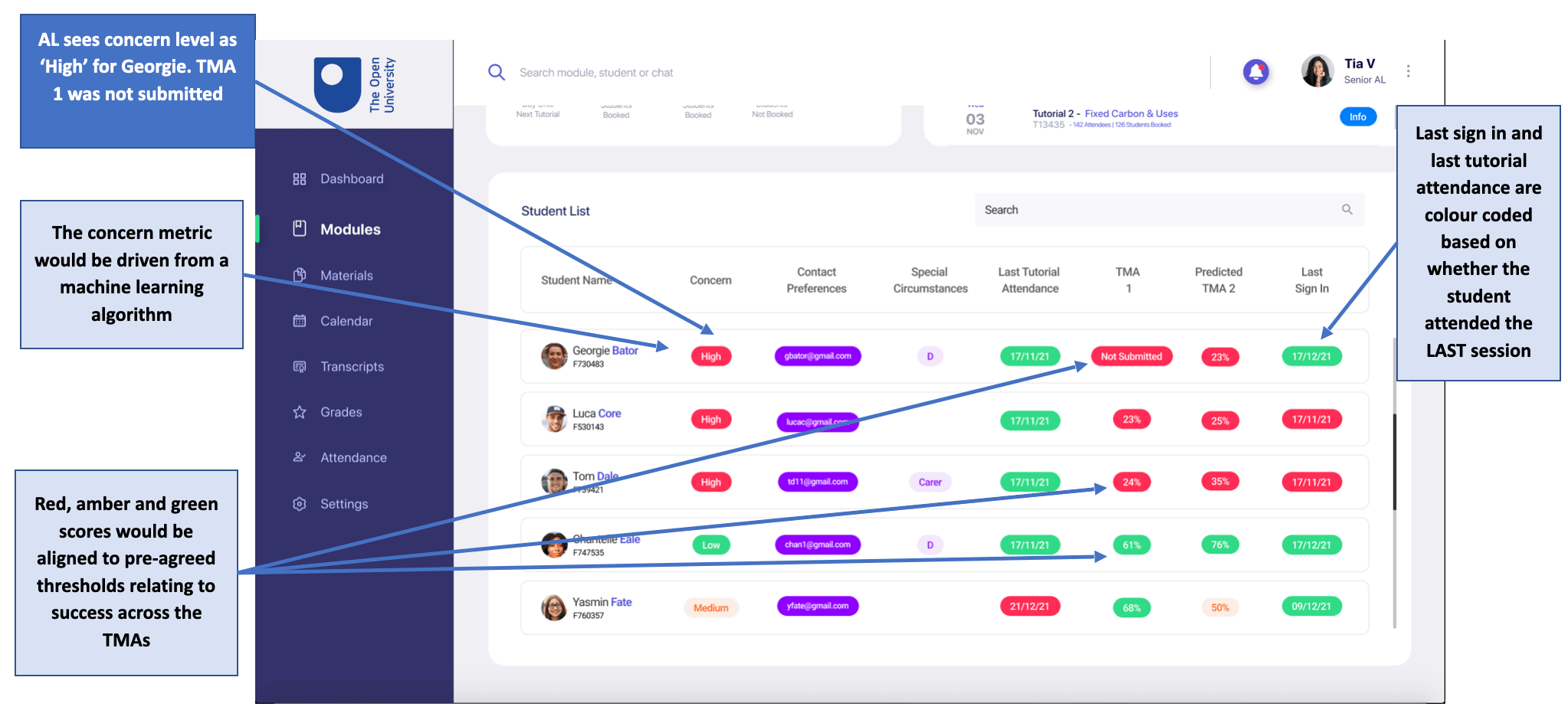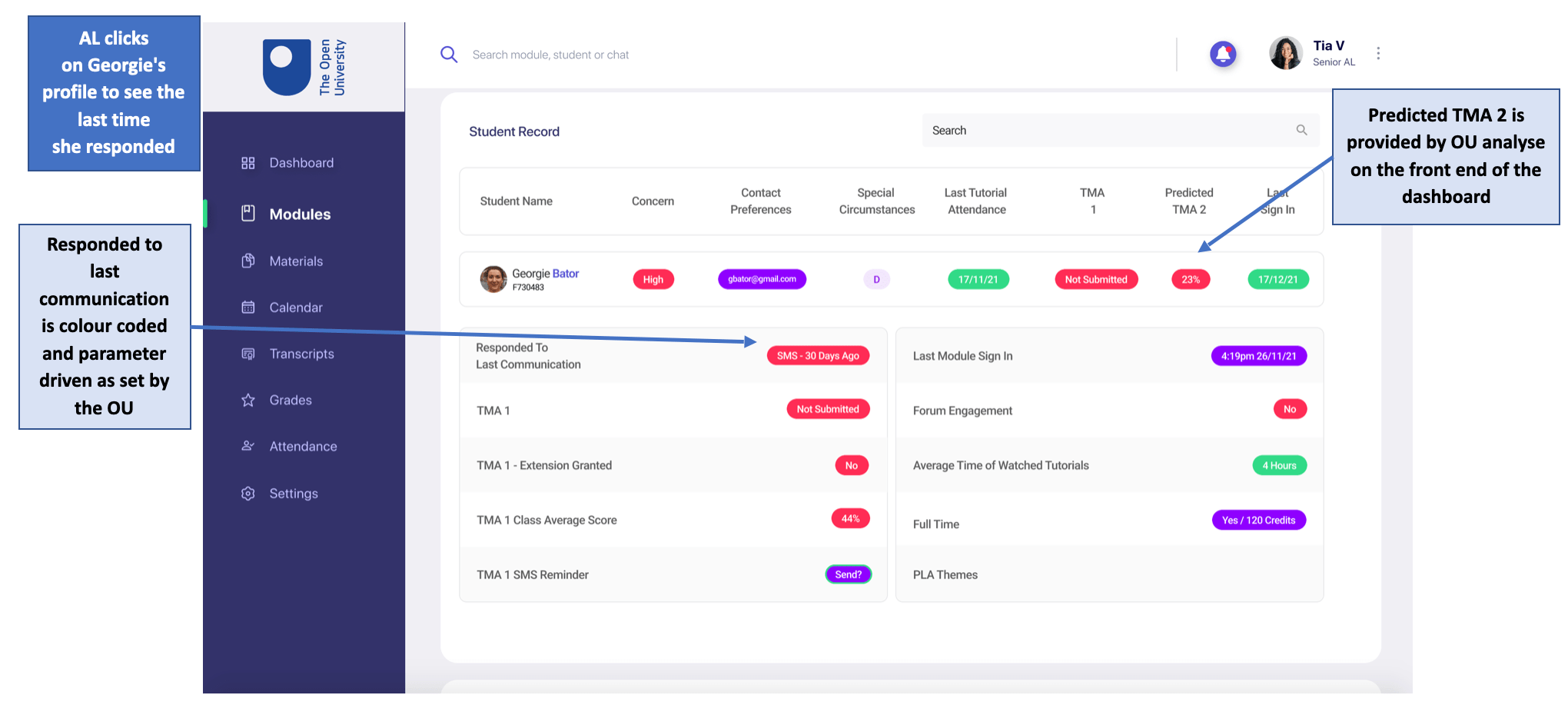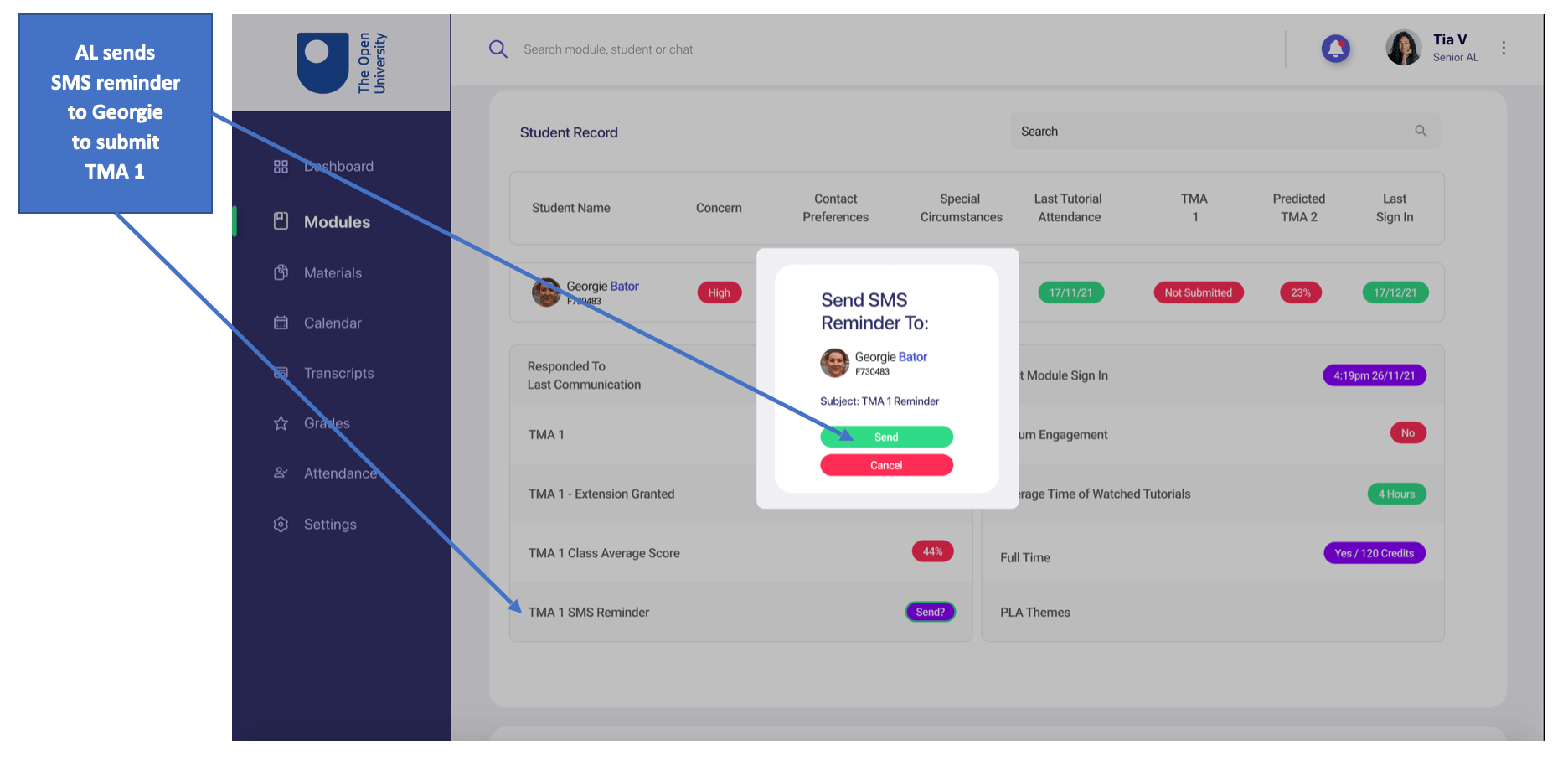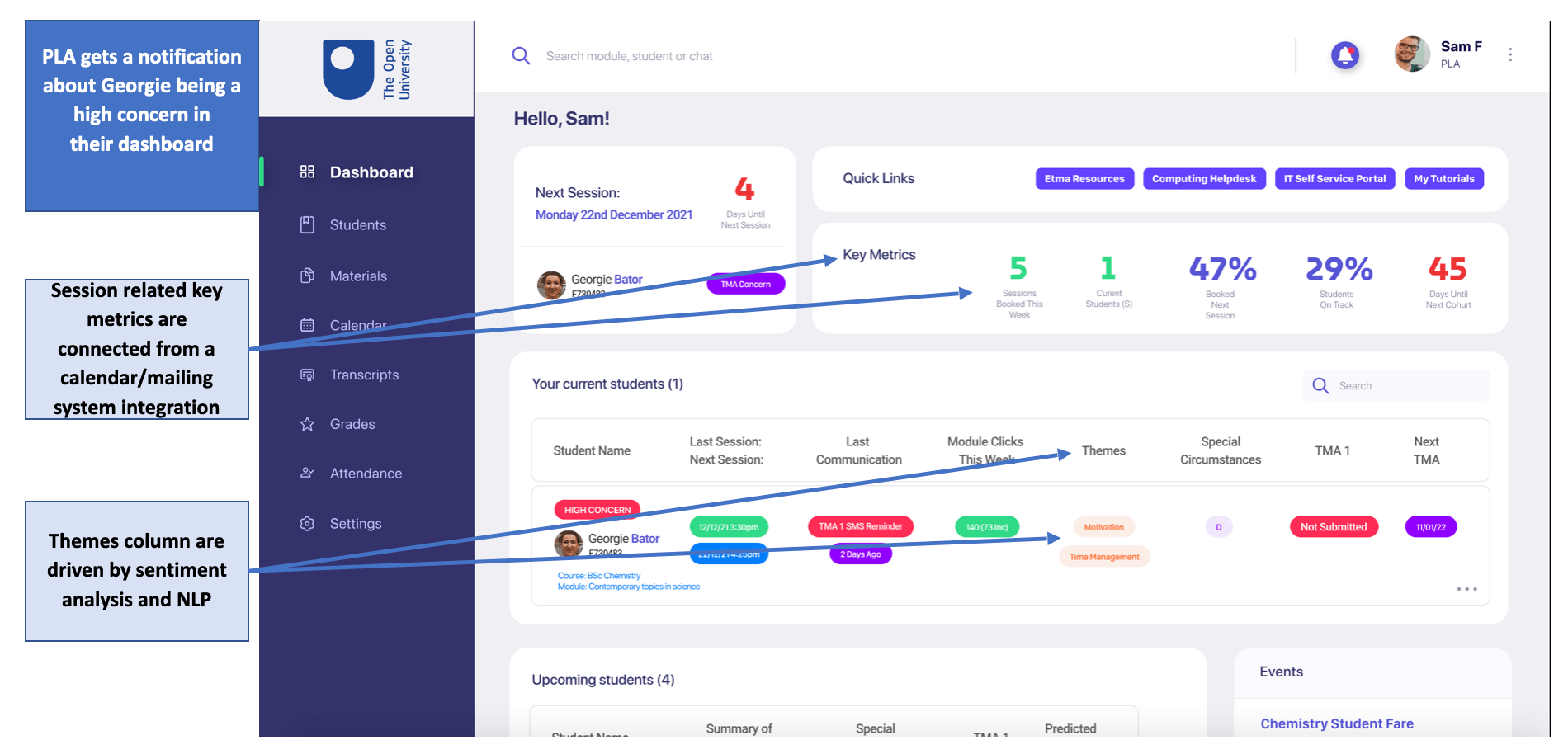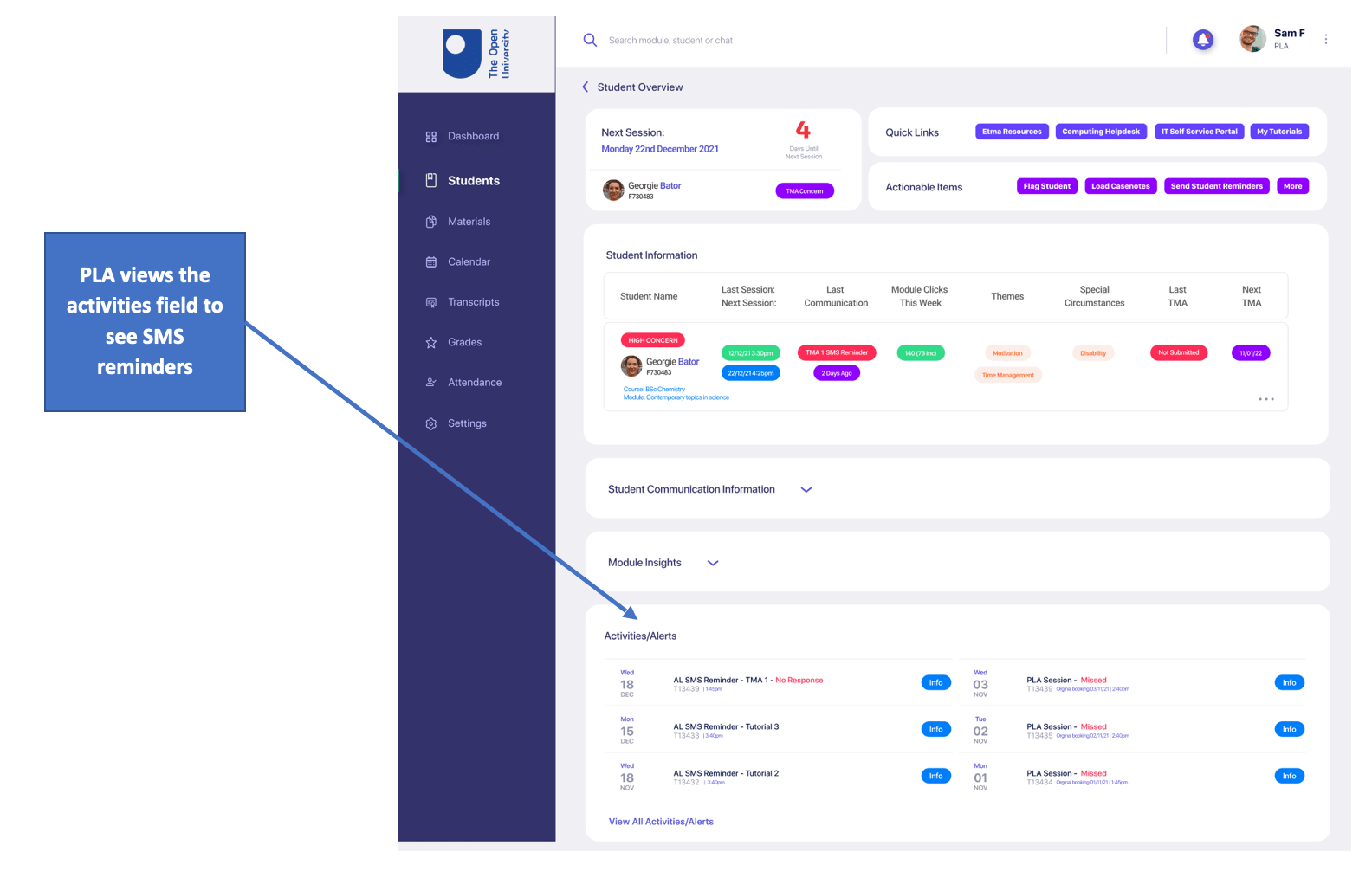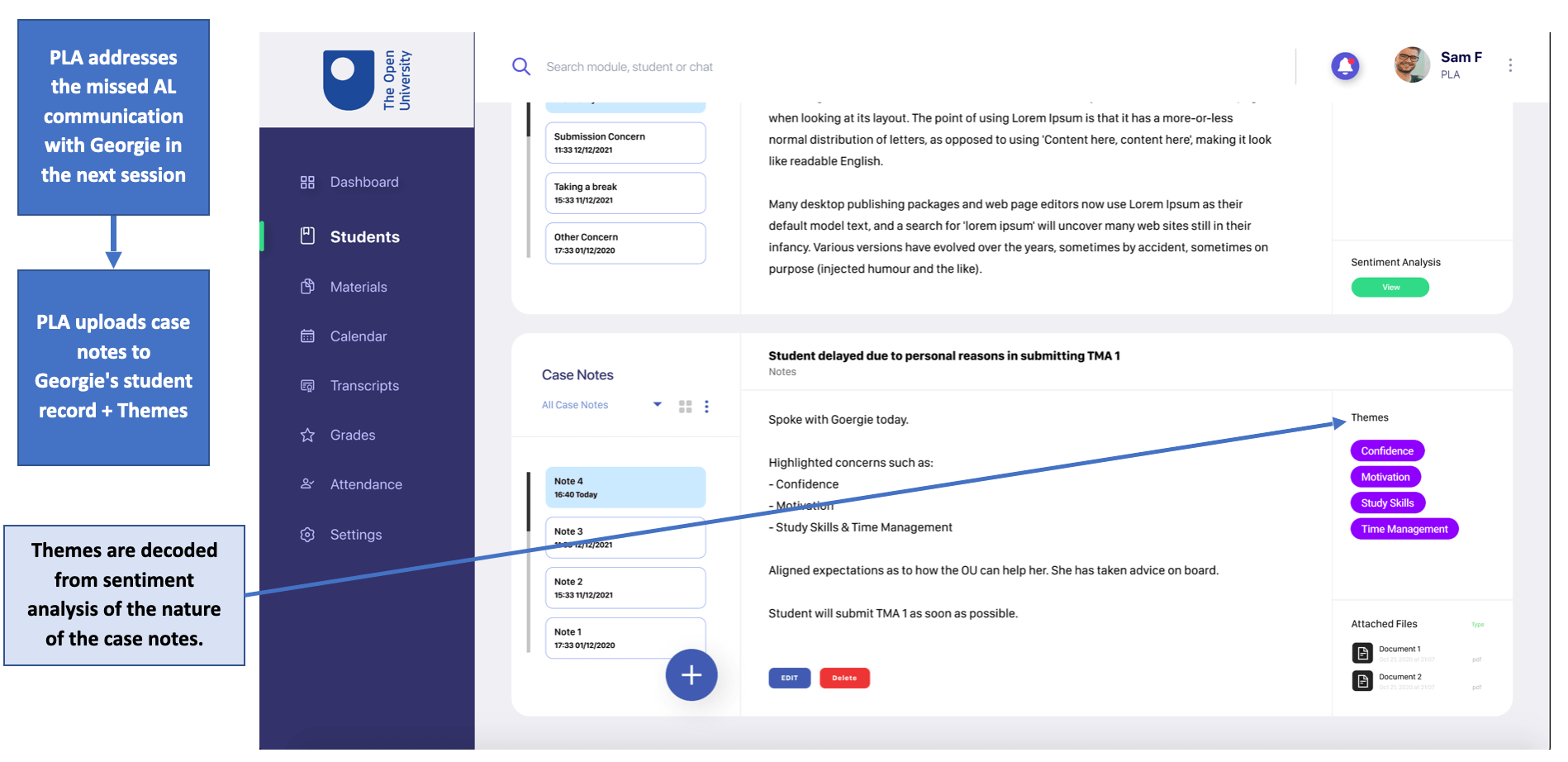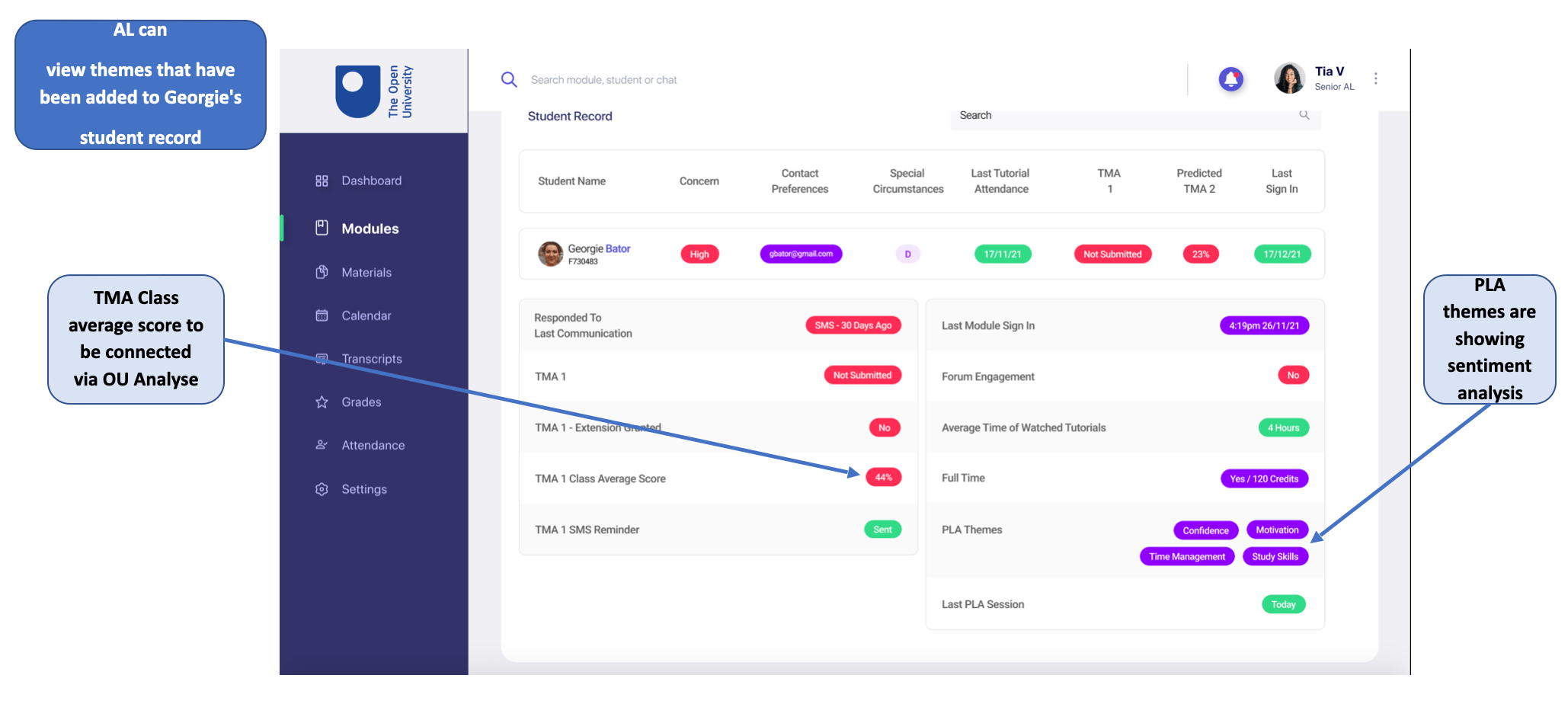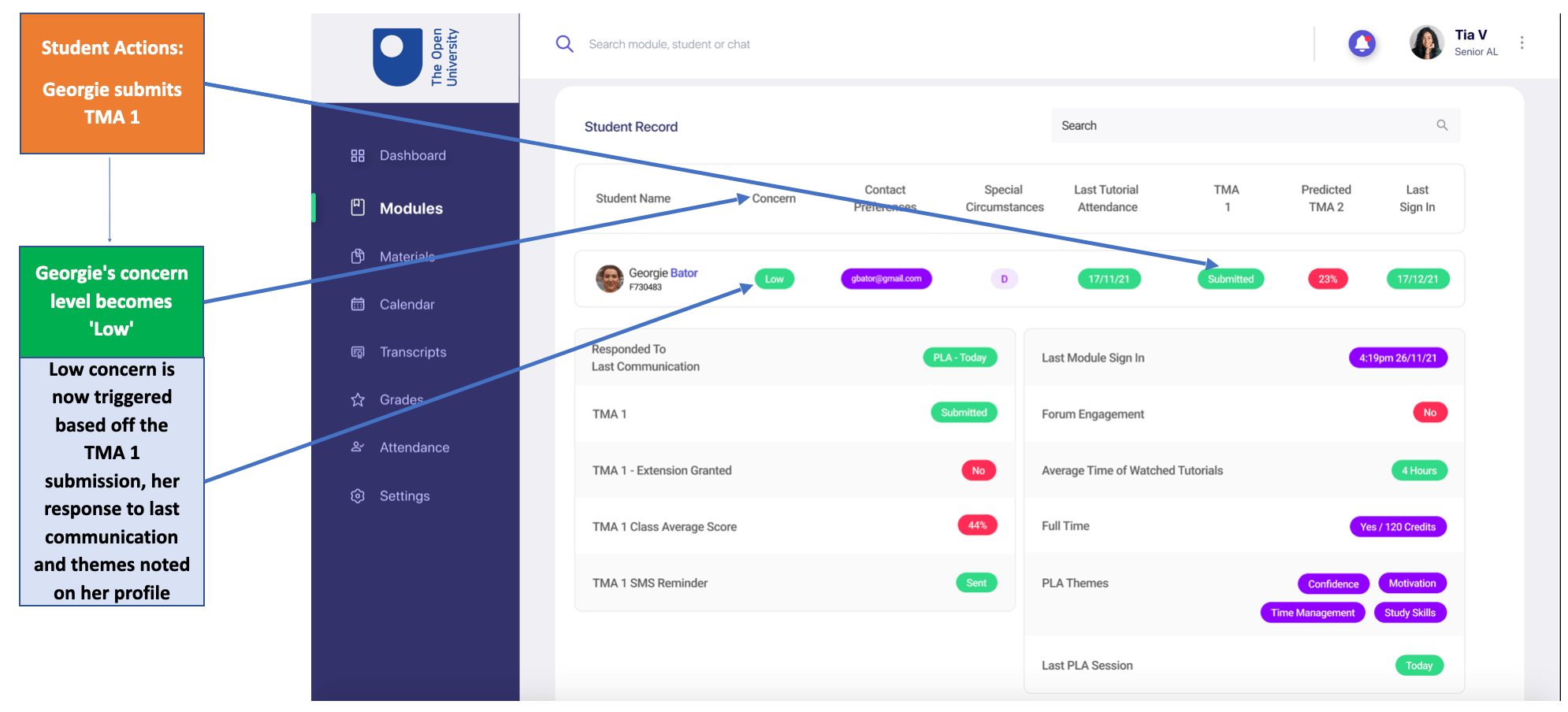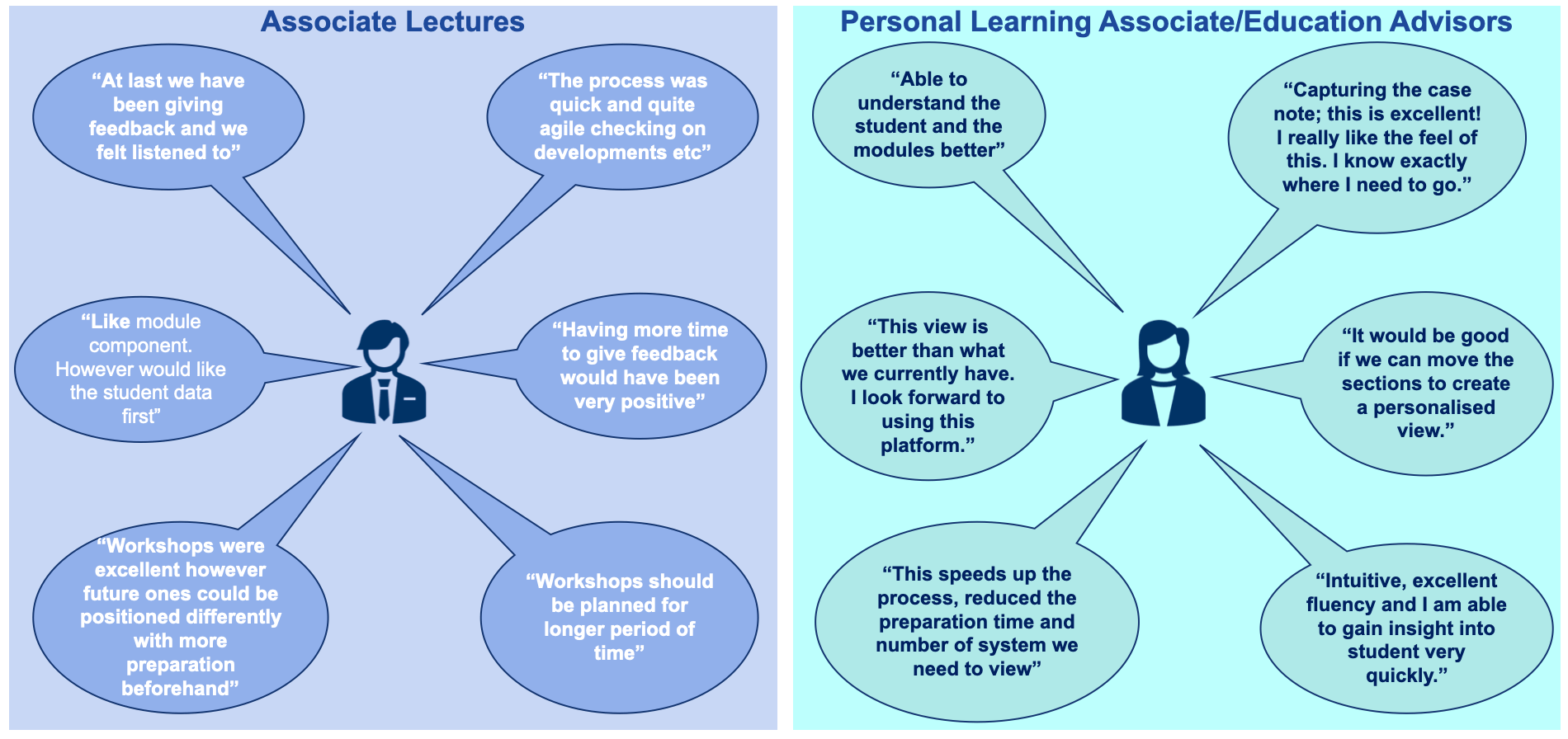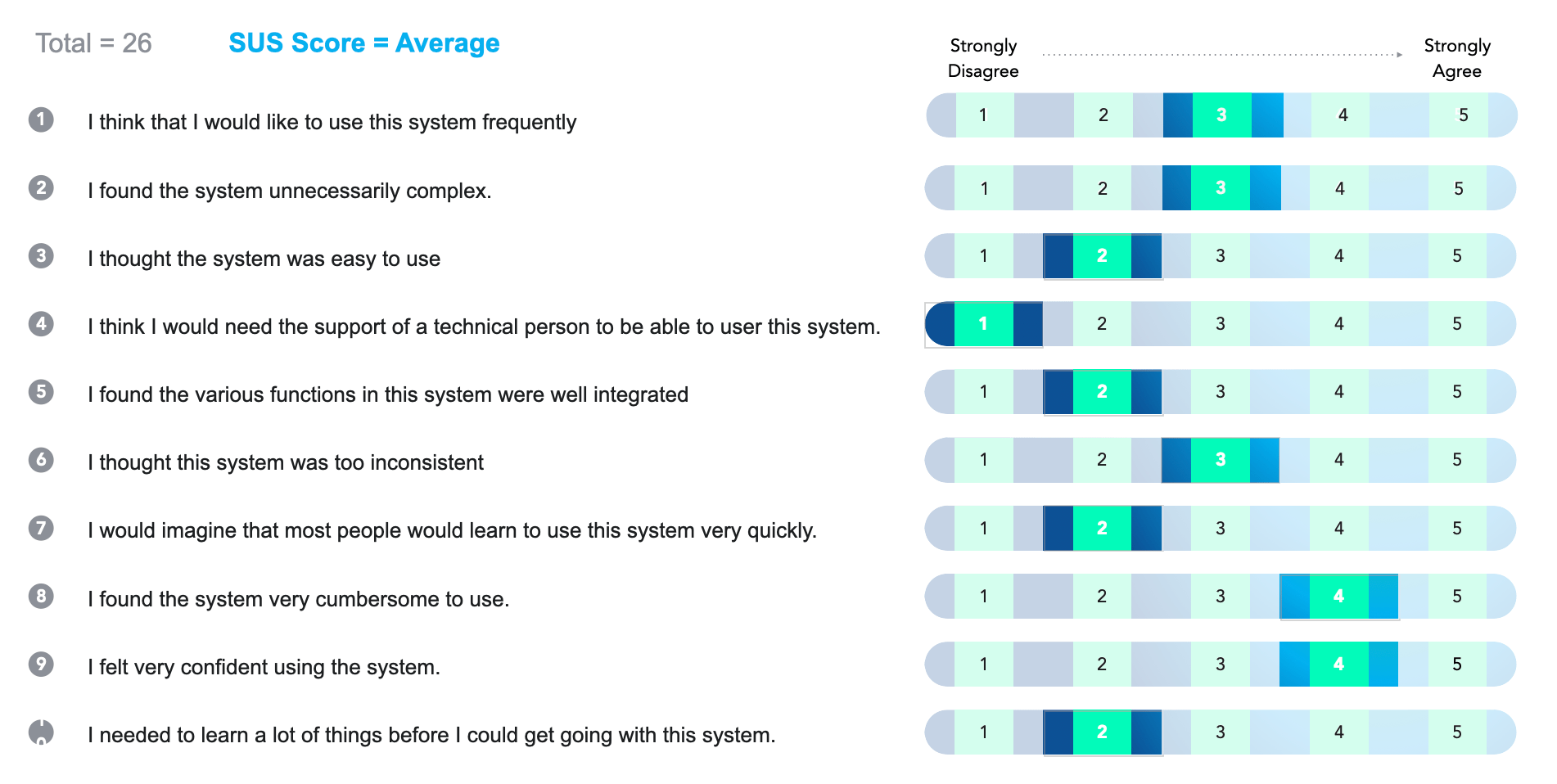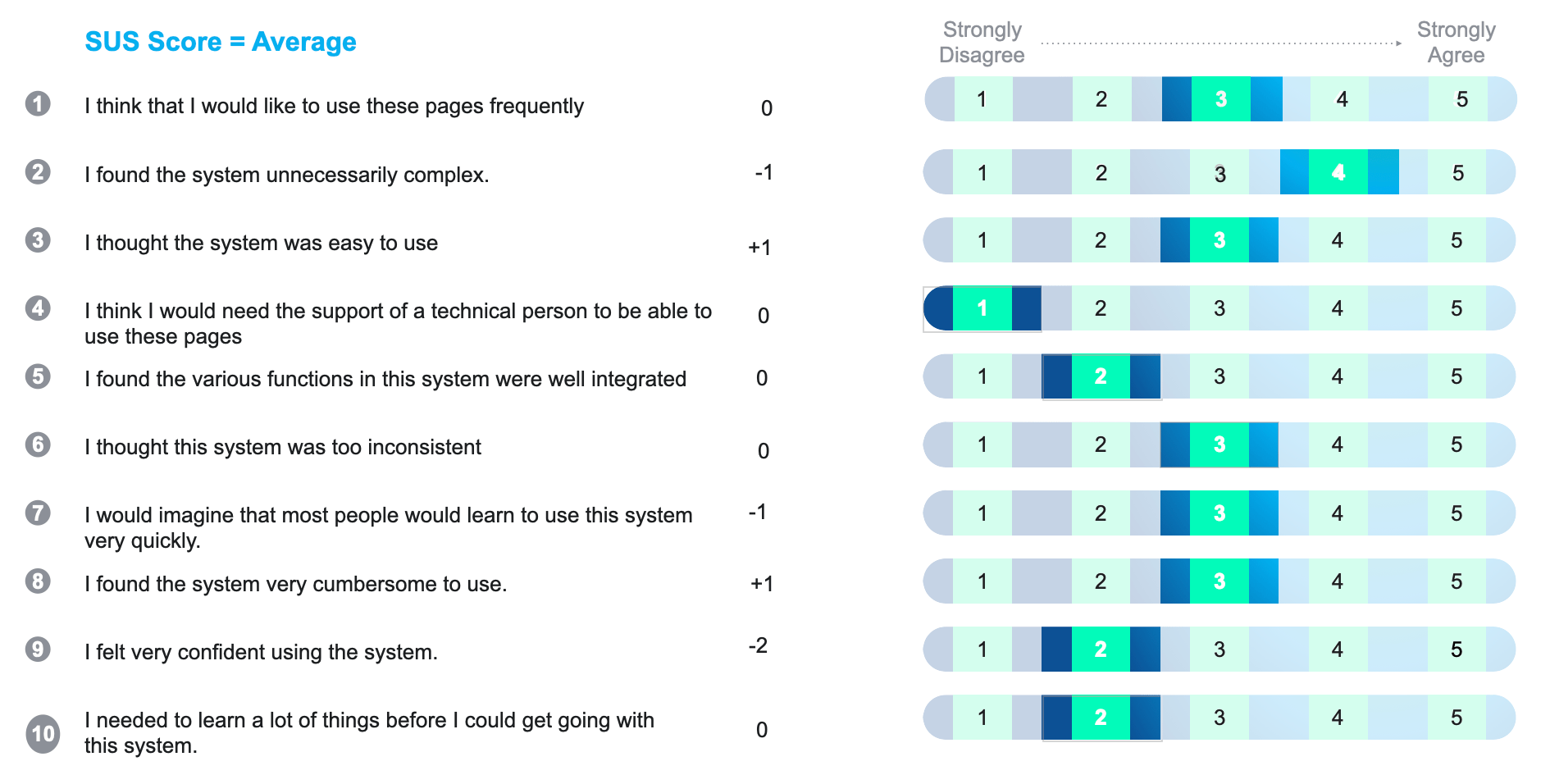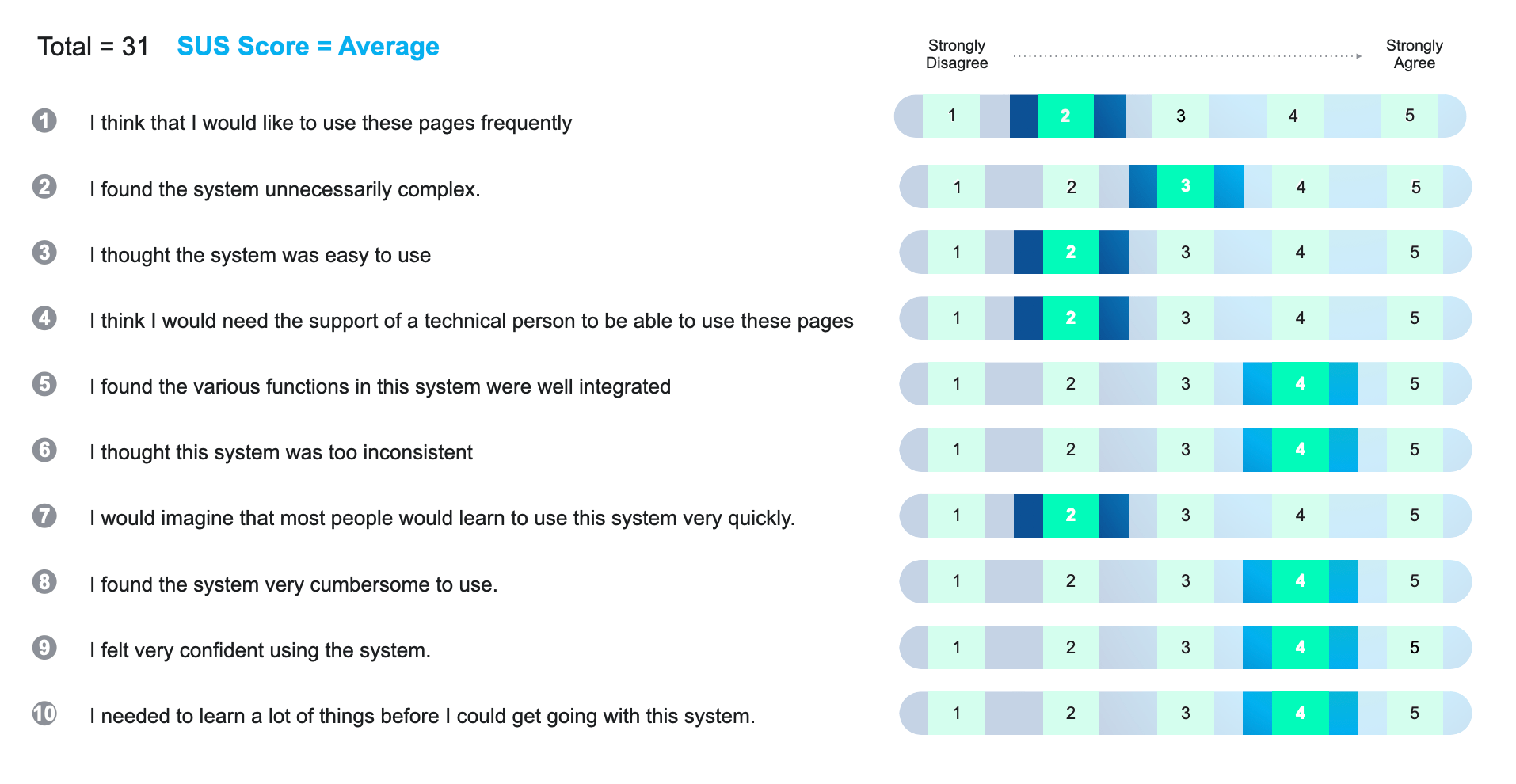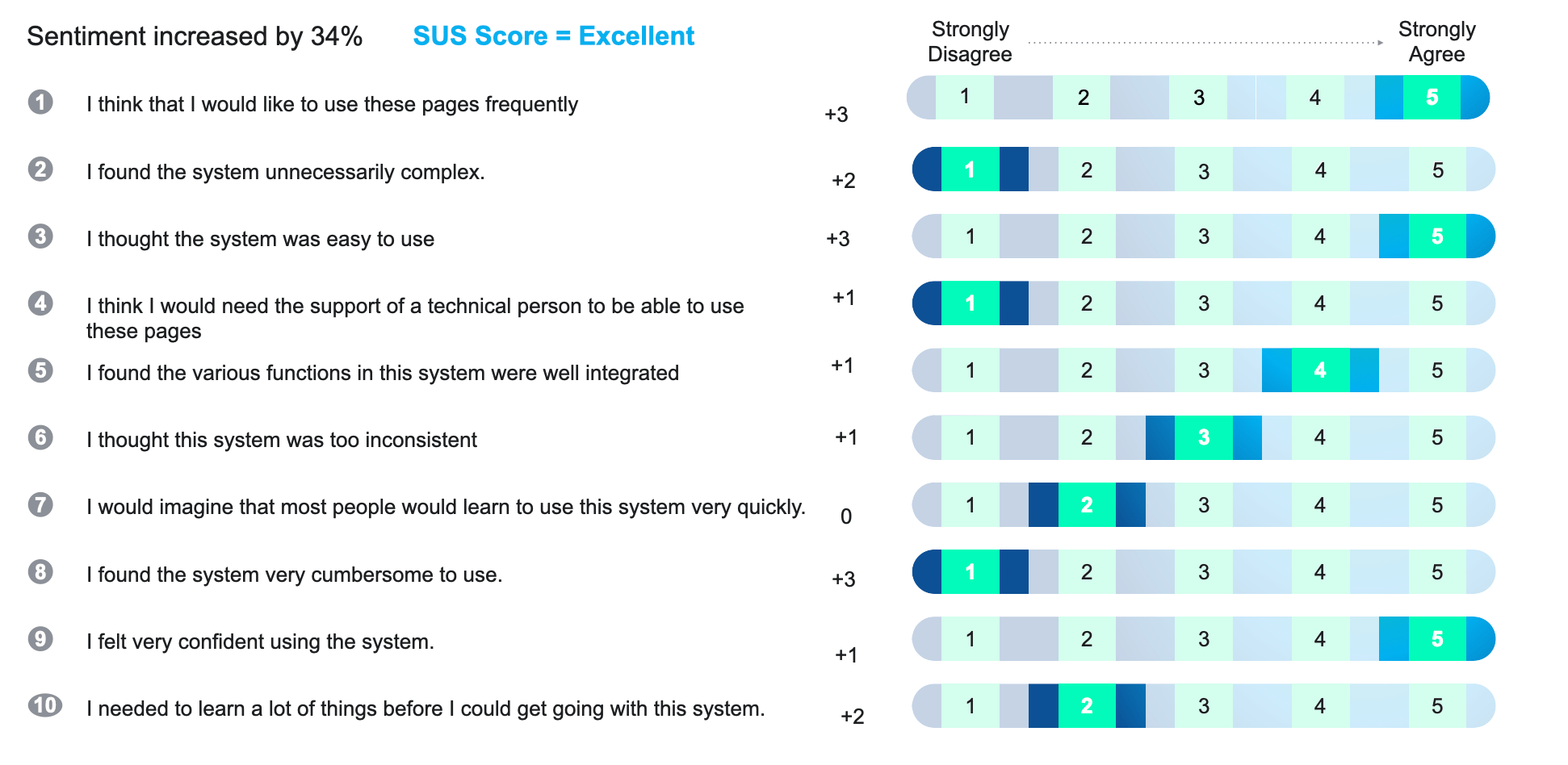Client:
The Open University (OU)
With Infosys Consulting (infosys)
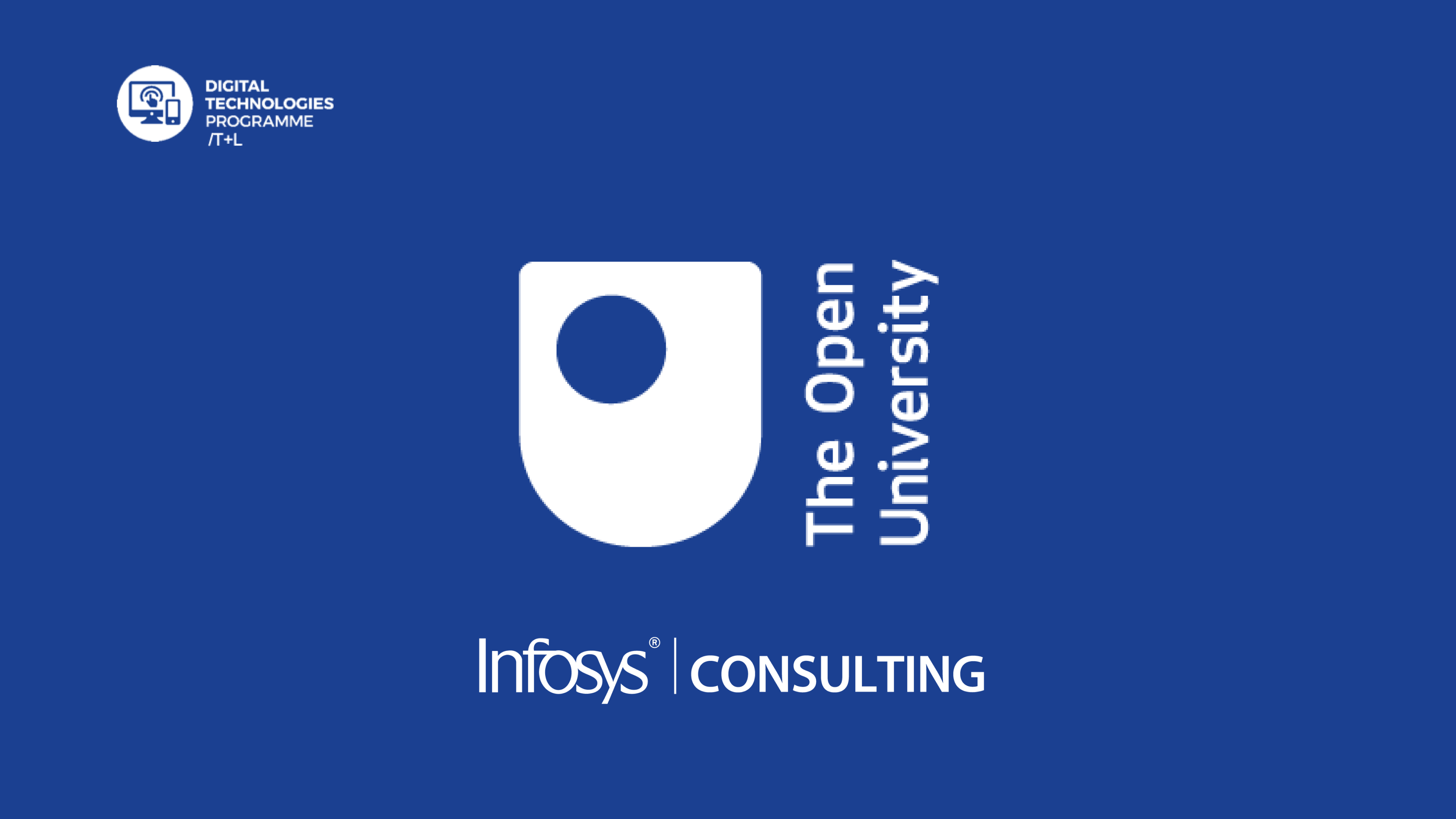
Brief:
To develop a product whereby all staff could gain access to an integrated 360° view of their students.
In order to provide insight in a systematic and informed manner that could then enable more effective targeting of support.
Product Name:
Student Insights
Point Of Contact:
CTO (The Open University) Director, data and insight, (The Open University)
Director, Design (Infosys)
Product Duration:
Dec 2021 - April 2022
My Role
Lead UI/UX/Product Designer
Location:
London, Various Cities, England
Team Size:
OU 9+
Infosys 15+
Personal Contributions:
Whilst conducting user research to very busy and rather technology in-experienced end users proved to be initially challenging. The entire project was joyful and a great insight to working with the largest academic institution in the United Kingdom (and one of the largest in Europe) by student number / and one of the world’s largest universities.
- Heuristics Evaluation
- Stakeholder Management
- User Interviews
- Affinity Mapping
- Competitive & Comparative Analysis
- Feature Prioritisation
- Information Architecture
- Site Mapping
- User Flows
- Usability Testing
- Wire-framing
- Rapid Prototyping
Problem/Goal:
Problem:
Numerous data and analytical tools have been developed and employed for use across the University. Often used by different categories of staff.
Partial view of the student journey and experience.
This lack of a coherent and integrated student relationship management system is preventing student-facing staff across the University from:
- Making better use of appropriate (just in time as well as pre-emptive) touch points with students to engage with them in an authentic and purposeful manner. This avoids the student being overloaded by interventions from different teams/areas.
- Being able to further target proactive interventions for students, by drawing on insight collectively gained by others.
- Measuring the value and effectiveness of individual, collective and integrated interventions (against appropriate, systematic KPMs and KPIs).
- Gaining better insight and understanding of the student experience and satisfaction of receiving integrated and informed support.
- Gaining efficiencies when supporting students by avoiding duplication of support.
- Using this insight and understanding of the student’s whole experience, to provide independent and/or specialist support while coordinating as appropriate with other teams who are or may need to support the student.
- Being able to attribute value to effectiveness of different support interventions.
- Providing a consistent and coordinated experience for students, across channels and staff.
Goal:
This primary objective of this product is to develop a system whereby all staff could gain access to an integrated 360° view of the student.
To provide insight in a systematic and informed manner that could then enable more effective targeting of support.
Must Haves:
The following must be carefully assessed are the must have features in the product:
- Assess privacy and data protection constraints.
- Information needed by different student-facing roles (PLA + AL) and whether this can be displayed meaningfully.
- How can different views of the student be created, depending on staff role and students’ journey. How easily can staff change these views.
- How to best display recent student interactions with other staff members.
- What meaningful key performance metrics and engagement insights should be presented.
- How to derive and recommend interventions, how can they be tracked.
- Data and integration requirements; how data flows into and from other systems, to keep information up-to-date and drive data-informed actions:
How to integrate with SIP to track interventions and show which communications have received by the student. - How this will link and integrate with a similar prototype T&L already developed for the DSE platform.
Design Process:
Empathise:
Observe and conduct research to identify and understand The OU's problems/concerns.
Also known as ‘Requirements Gathering’.
Prototype:
Build realistic representations of the ideas generated from research. Being very careful to remove bias and to re-validate any assumptions.
Define:
Combine all research and identify the key problem across various platforms/systems. Arrange the problems in an order of priority entered on the key users’ needs.
Understand:
Test with users as fast possible. Then, reiterate until a certain standard has been achieved. From here, modify, further validate assumptions and then release the product.
Ideate:
Generate a range of creative but practical solutions to address the user’s needs.
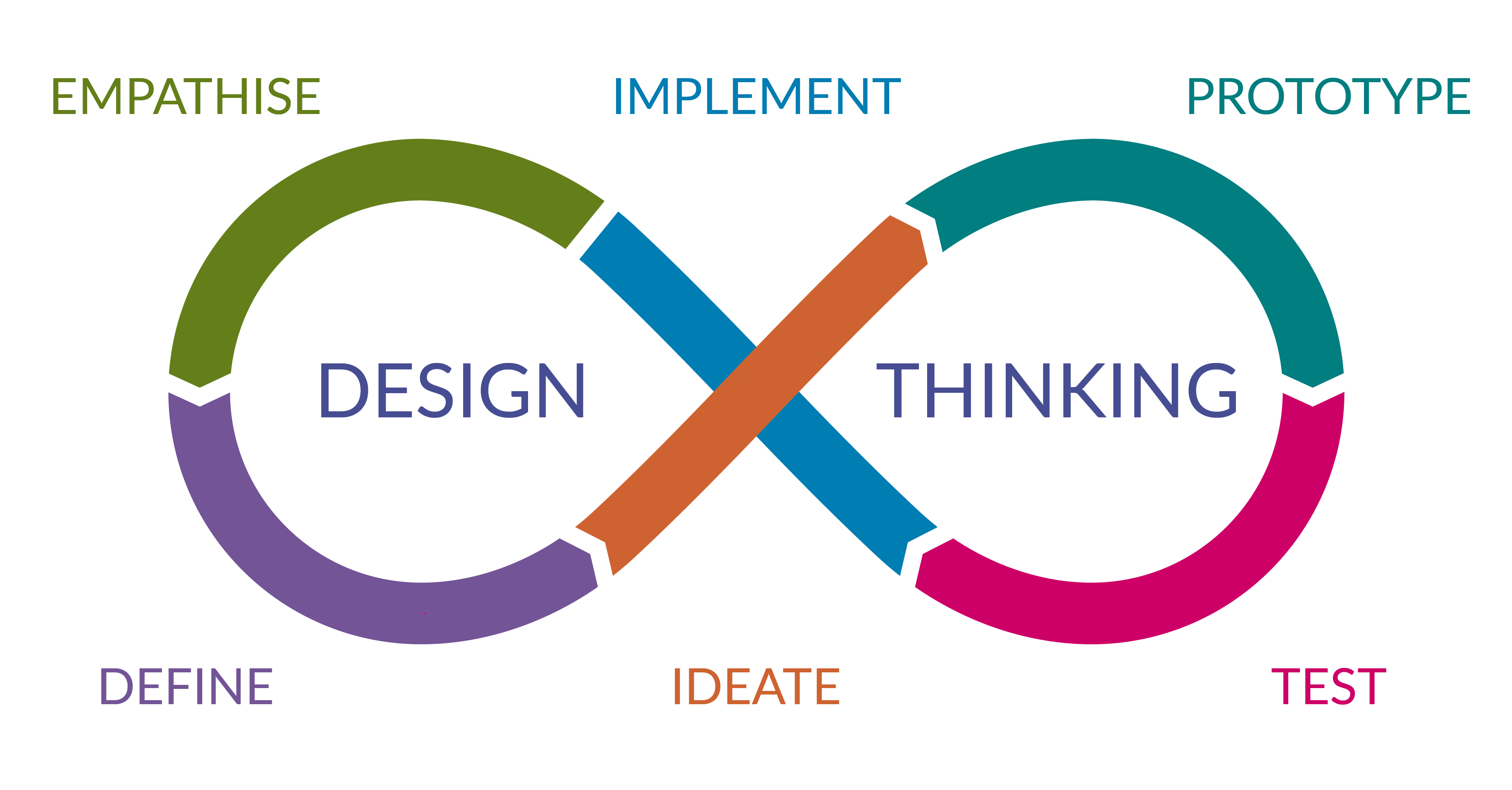
Sprint Breakdown:
Intro Sprint:
• Project Preparation
• Team Onboarding
• Workshop planning and organisation
• AL Additional contracts Duties
• Project Meetings planning and organisation
• System Demo of Voice, Tutor Home and Assist
Sprint 2:
• Onboard Salesforce Technical Architect
• Delivered all 8 workshops to AL and PLA
• Delivered 1 specific EA workshop
• Continued working with the Data teams across OU
• Socialised D1: Generic AL, PLA User Personas at workshop 3, 4 and via email
• Socialise D2: Generic AL, PLA and EA User Journey suited to Georgie student journey at workshop 3, 4 and via email
• Socialised D3: UI Mock Up with features from workshops at workshop 3 & 4
• Socialised D4: Data requirement: list of data and integration points needed for a working prototype
• Completed UI Mock up demo to the wider stakeholder groups
Sprint 4:
• Complete D4: Data requirement: list of data and integration points needed for a working prototype.
• Complete D5: Recommendations and planning for Phase 2 to inform CRM Business Case.
• Complete D5: L0 Architecture Overview Document.
• Complete D5: Implementation approach.
• Complete D5: Costing.
• Complete D5: Comparison of current AS-IS process and TO-BE process.
• Complete D5: Staff feedback survey.
• Close RAID log prior to project closure on 17th Feb 2022 • Document Student Insight POC Lessons learnt
• Begin Student Insight POC closure presentation
• Upload all documents and communications to MS Teams
Sprint 1:
• Team Onboarding
• Delivered 5 workshops (PLA = 2 and AL = 3)
• Begin documenting AL and PLA User Personas
• Begin user Stories
• Demo UI Mock up for ALs
• Begin UI Mock up for PLA View
• Begin the Data Mapping workbook to understand the data elements which will form part of the views.
• Another OU system demo
• Salesforce Demo for UI Mockup.
• Feedback grid from AL Workshop 1 and PLA Workshop 1 • Empathy map for AL and PLA
• Site Map
Sprint 3:
• Continue Data requirement working sessions
• Future PLA service design discussion - completed
• Complete D3 UI Mock-up with screen shots and video with audio.
• Update and Socialise D4: Data requirement: list of data and integration points needed for a working prototype.
• Complete D5: Comparison of current AS-IS process and TO-BE process.
• Complete D5: Staff feedback survey.
User Personas / User Journeys:
End user primarily consisted of 3 main user personas.
- Students
- ALs (Associate Lecturers)
- PLA (Personal Learning Advisors)
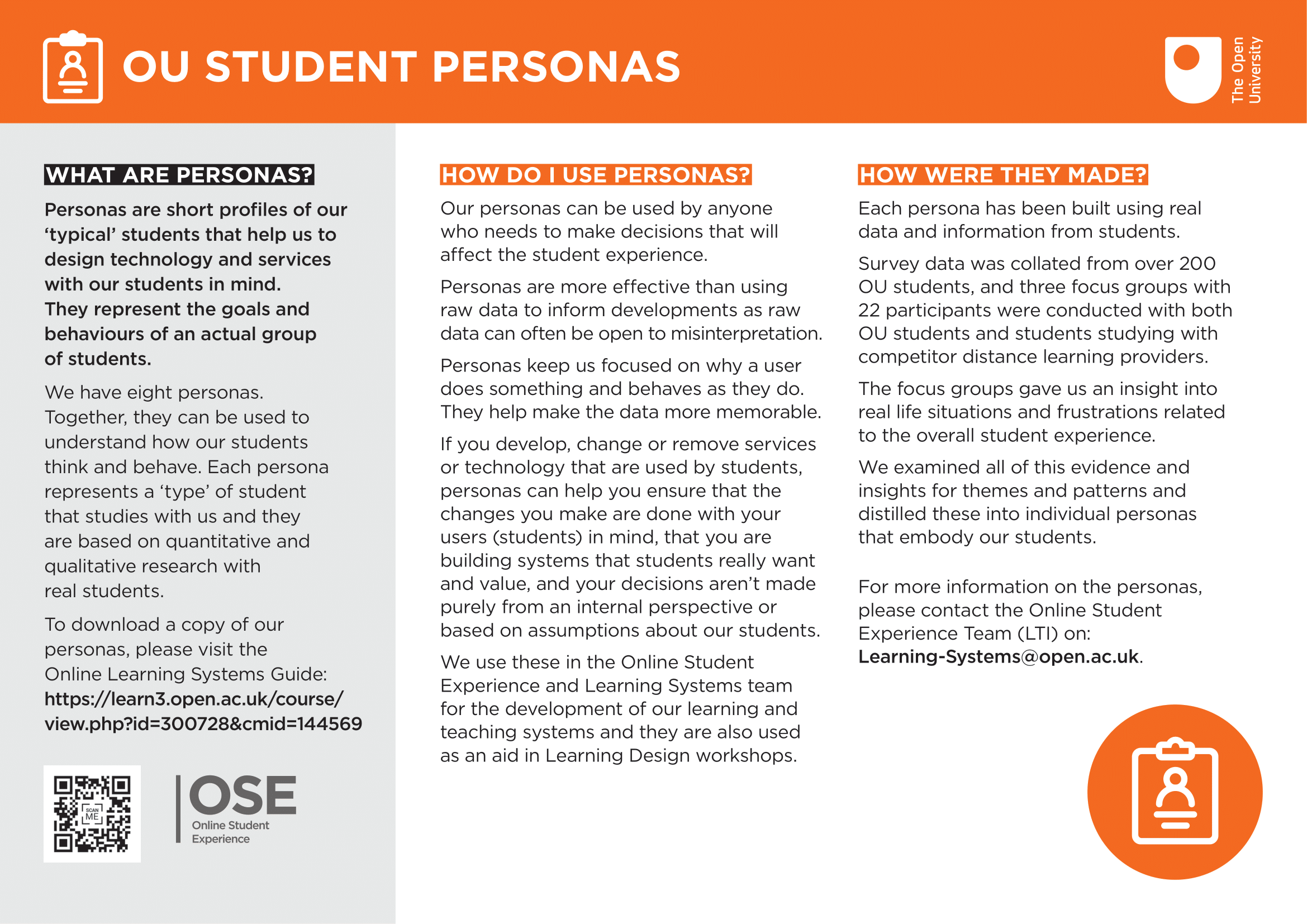
Students:
“User journeys keep the student at the heart of what you do”
Student user personas help stakeholders:
- Visualise the user experience
- Creates a culture of student centricity
- Predict student behaviour
- Identify key issues across points of the journey
AL/PLA:
The personas developed are tailored for Associate Lecturers and Personal Learning Advisors/Educational Advisors.
Focusing on two specific parts of a student journey for an AL/PLA
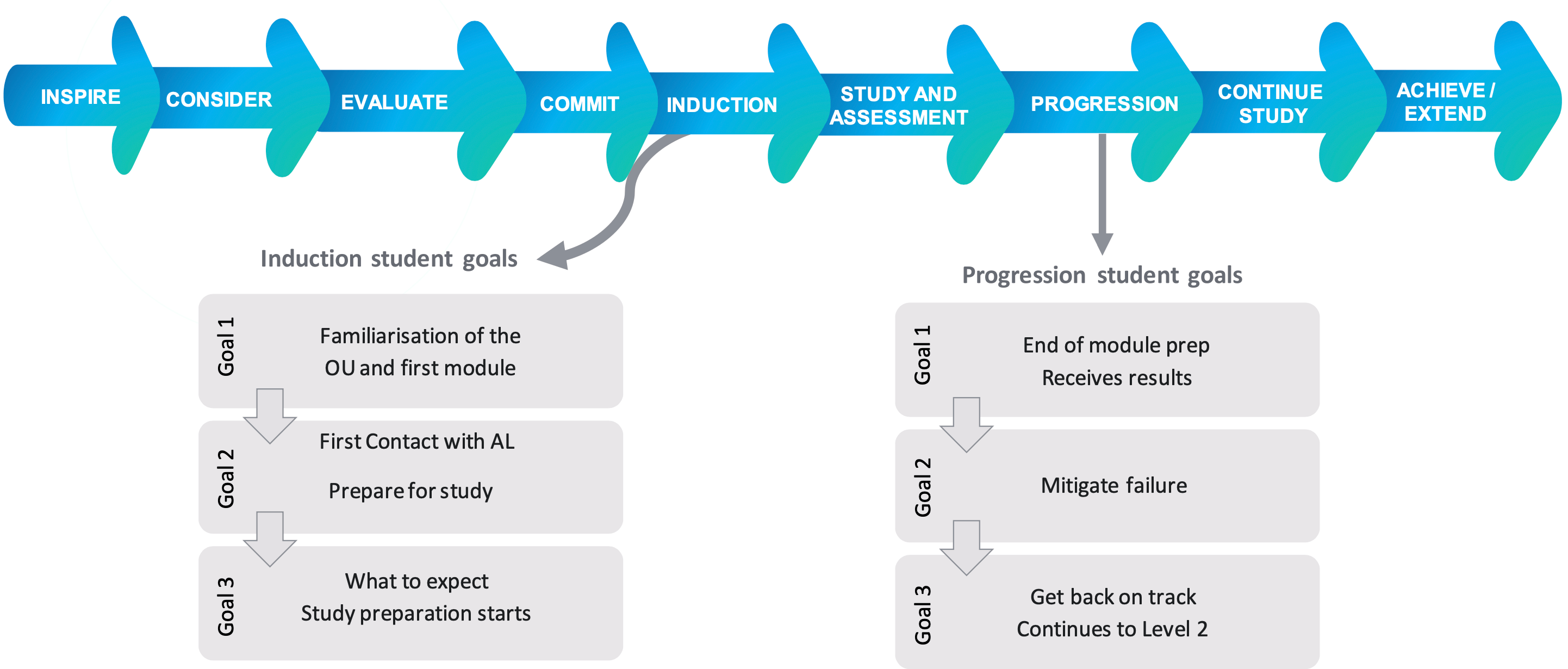
Employee (AL/PLA) Persona:
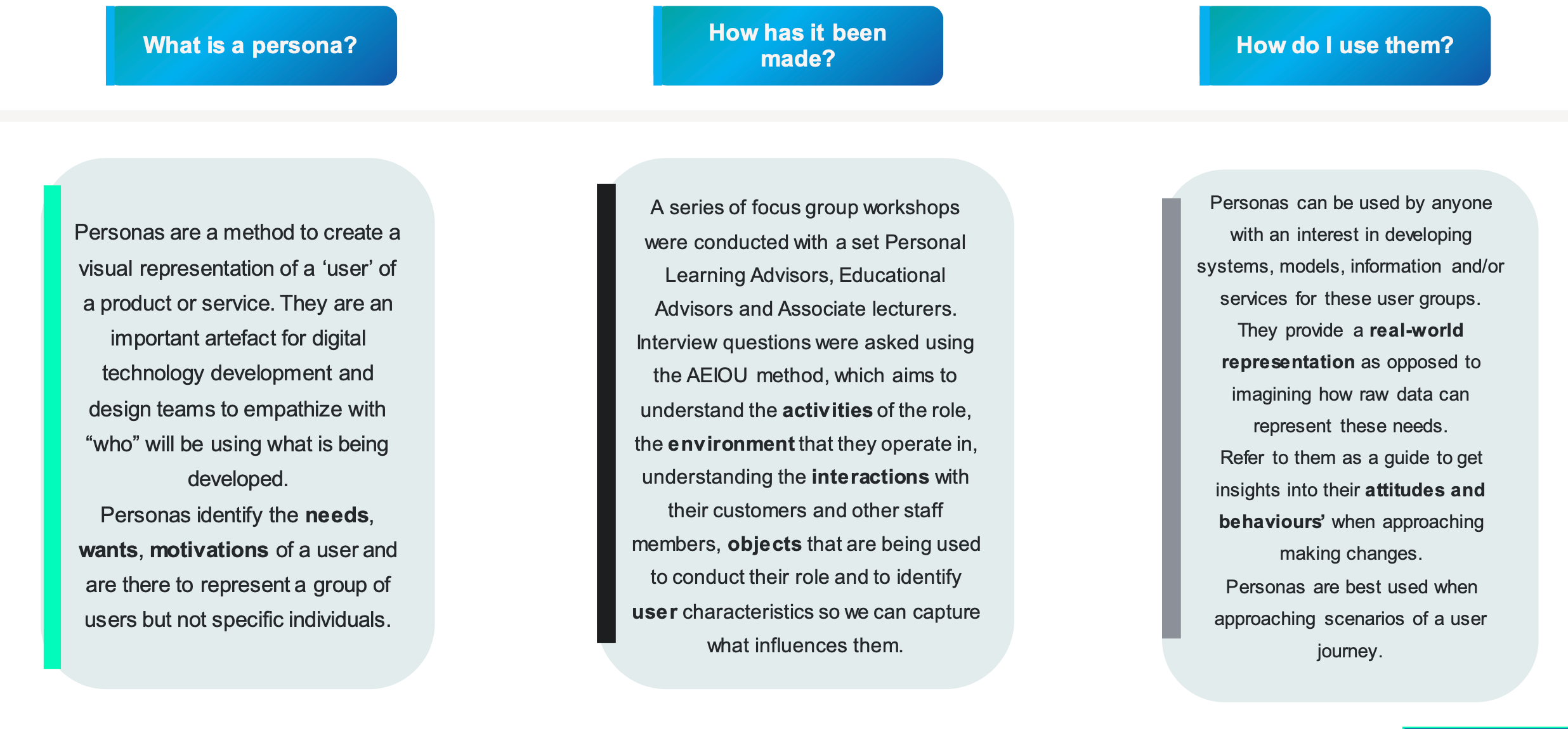
Associate Lecturer Feedback Grid:
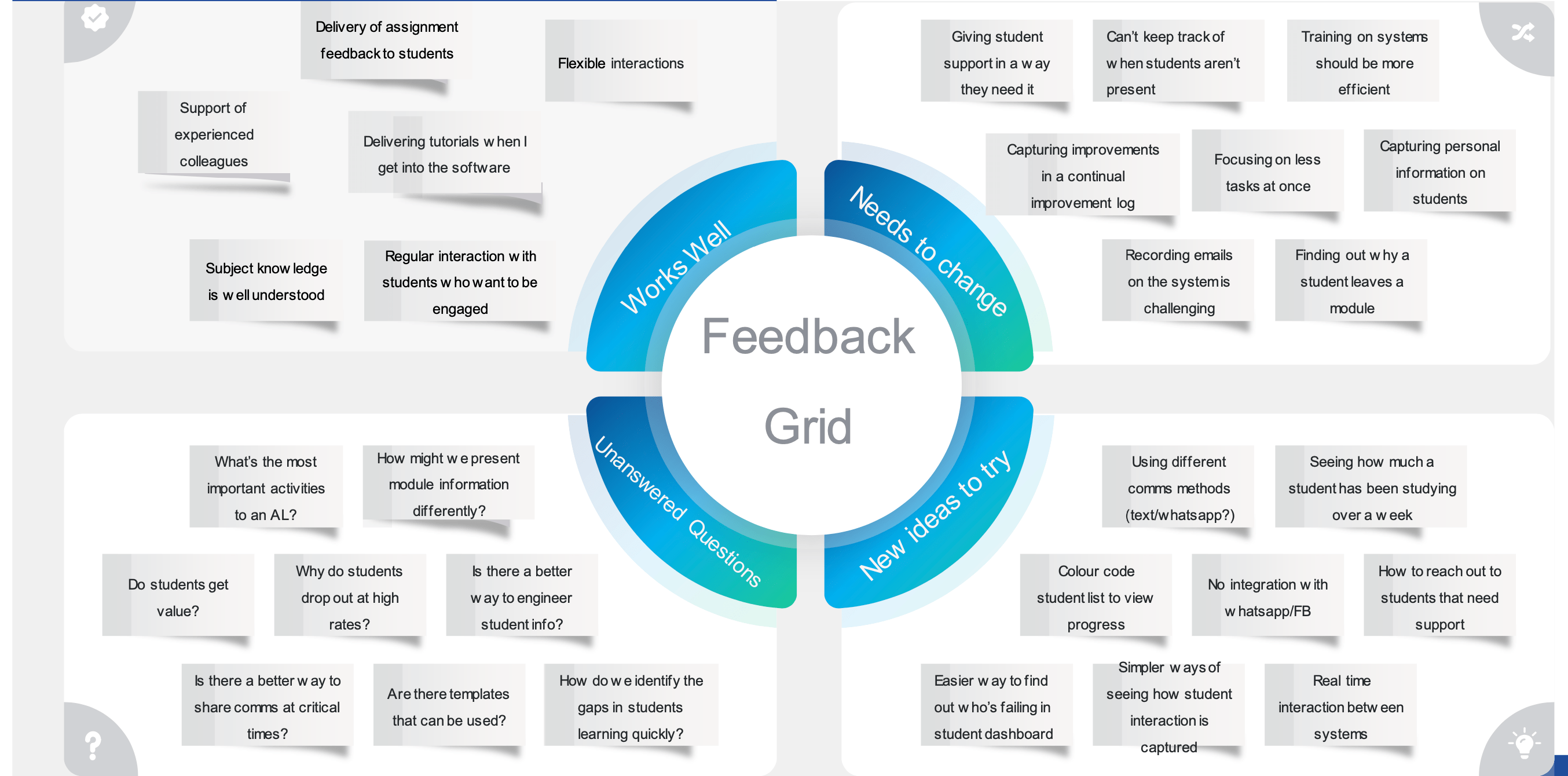
Associate Lecturer (AL) User Persona:
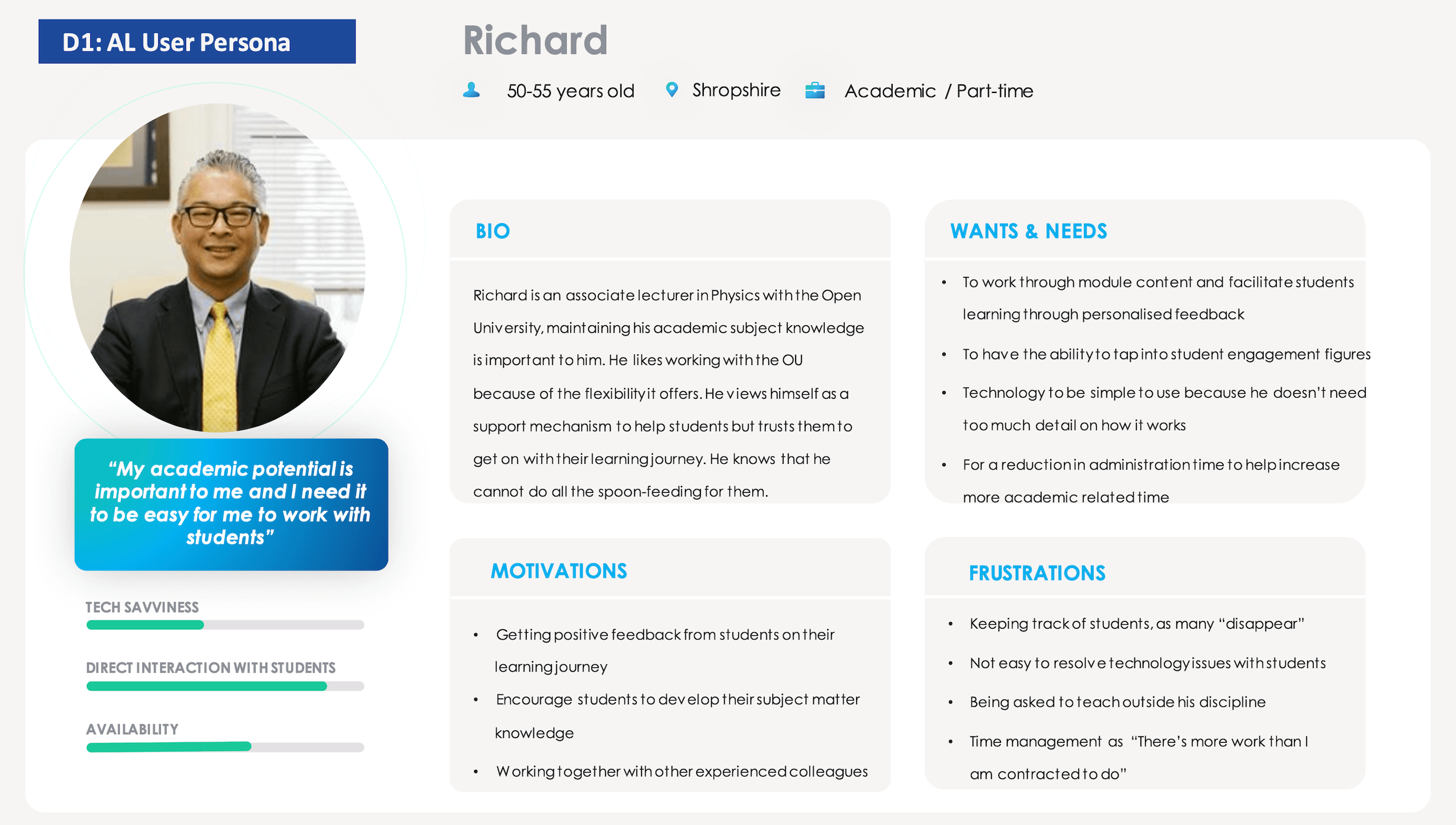
PLA/EA Empathy Map:
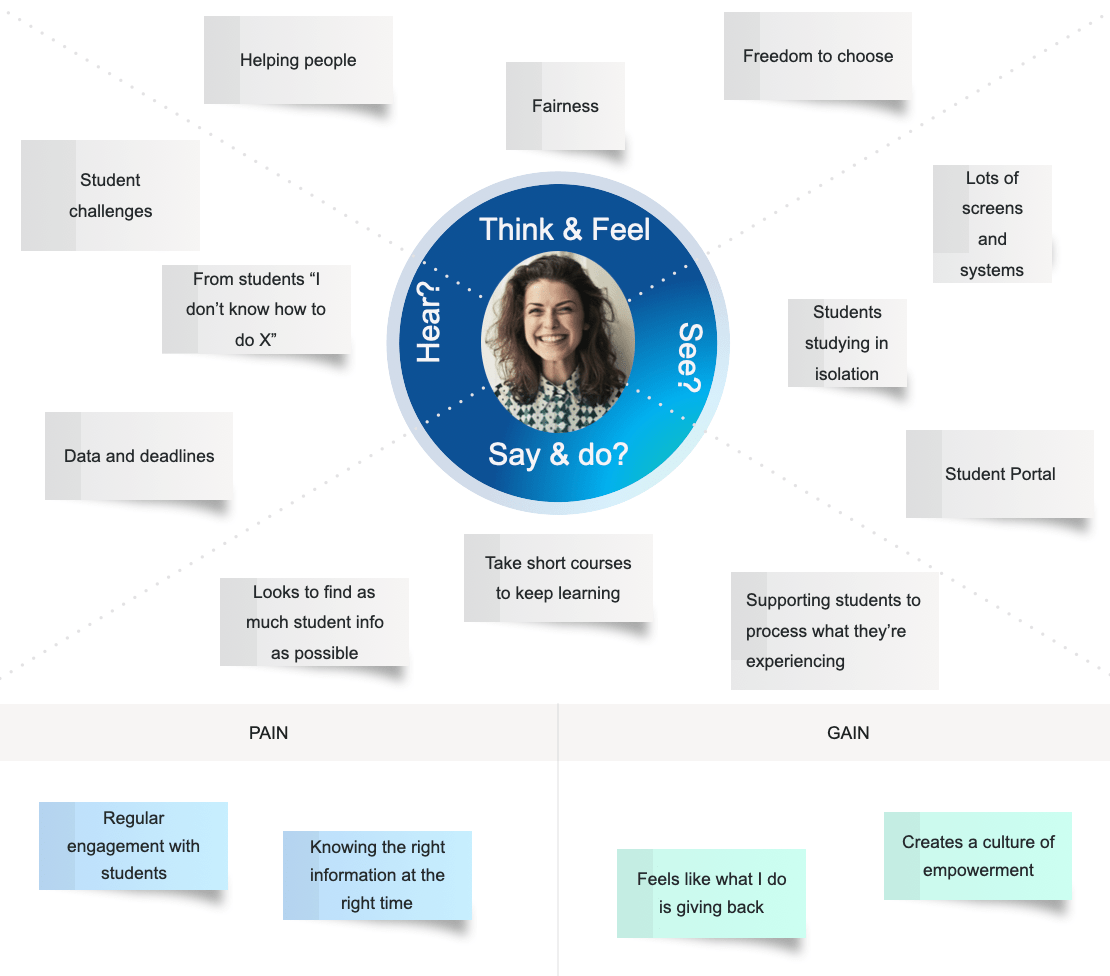
PLA User Persona:
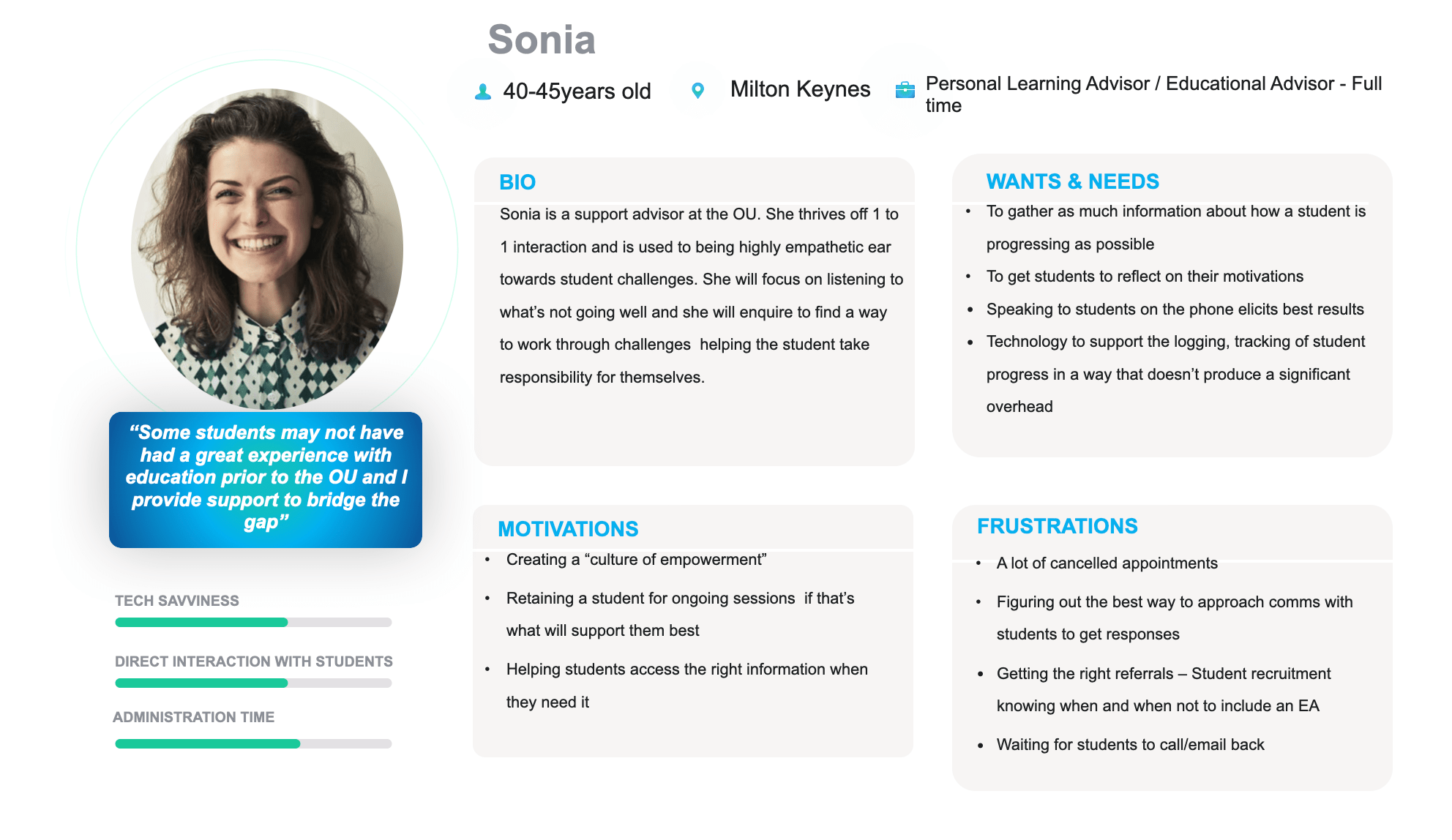
Scenario Mapping:
Scenarios are descriptive or pictorial stories of the users or personas we are designing for. Scenarios involve a user performing certain actions or simulations to accomplish a goal. It also involves using a product, service or prototype to accomplish certain goals in their day-to-day activities or otherwise. Scenario stories also help researchers figure user objectives. It can be employed at the time of usability testing to determine the extent to which a product can capture value or resolve a challenge a user is facing.
SCENARIO 2 – Associate Lecturer View:
Georgie, a student with the OU has been working hard to move on from her Level 1 studies into her Level 2, she’s failed and wants guidance on what’s next?
SCENARIO 4 – Educational Advisor (EA):
Georgie, a student with the OU has been working hard to move on from her Level 1 studies into her Level 2, she’s failed, and she’s had a medical issue and wants to know what’s next.
Data Requirements:
A requirement is a statement about an intended product that specifies what it should do or how to do it. For requirements to be effectively implemented and measured, they must be specific, unambiguous and clear.
Below is a list of data and integration points needed for a working prototype.
Workshops:
User-centred approach to knowledge extraction and understanding was conducted via interviews and workshops with identified stakeholders. (ALs and PLAs)
Mock Up:
Prototype developed in an iterative process, alongside the AL and PLA workshops.
Usability Survey:
The usability survey enables designers to have a litmus test of how the system is felt to perform and where the gaps are in the user experience.
It provides quantitative feedback that can be measured across the beginning and end of a project lifecycle
The questionnaire has been designed with a mixed bag of positive and negatively drawn sentiment related statements. So all answers being ‘strongly agree’ would not be a perfect usability score.
Objectives Met?
This primary objective of this POC is to develop a system whereby all staff could gain access to an integrated 360° view of the student
Objective:
This primary objective of this POC is to develop a system whereby all staff could gain access to an integrated 360° view of the student.
Provide insight in a systematic and informed manner that could then enable more effective targeting of support.
Outcome:
Yes. We have address the three following staff groups: AL, PLA and EA. The mock up illustrates how the data from the various current sources could be presented via Salesforce in the visual front end.
The D2 User journeys, D3 UI mockup and D4 Data requirements illustrate how a systematic approach could be used to present the data from different sources is a usable and effective way.
The UI mock up has been circulated with the Als and PLAs and they have provided constructive feedback into the layout of this to ensure that they can provide effective and targeted support by having the most accurate information presented.
